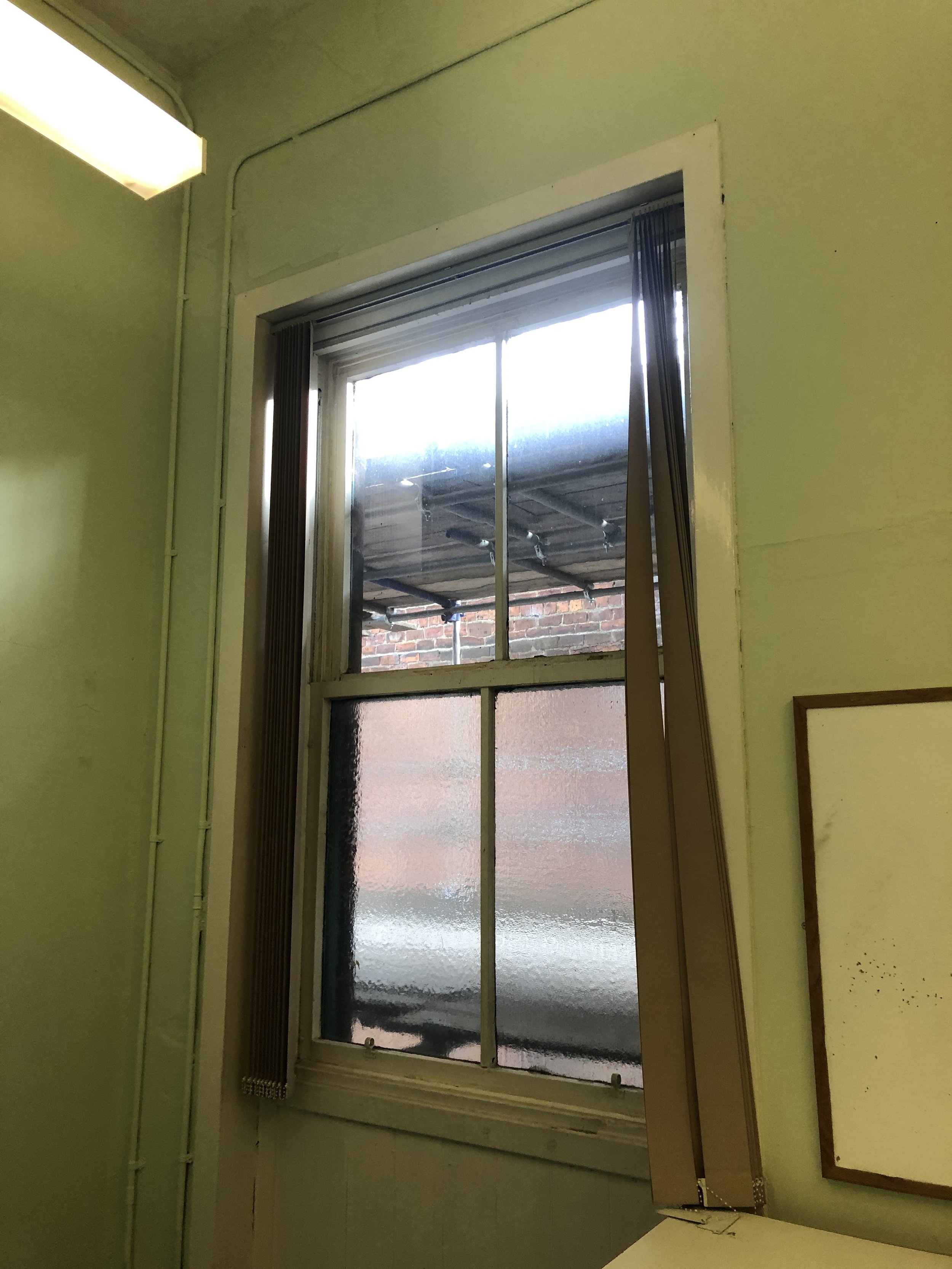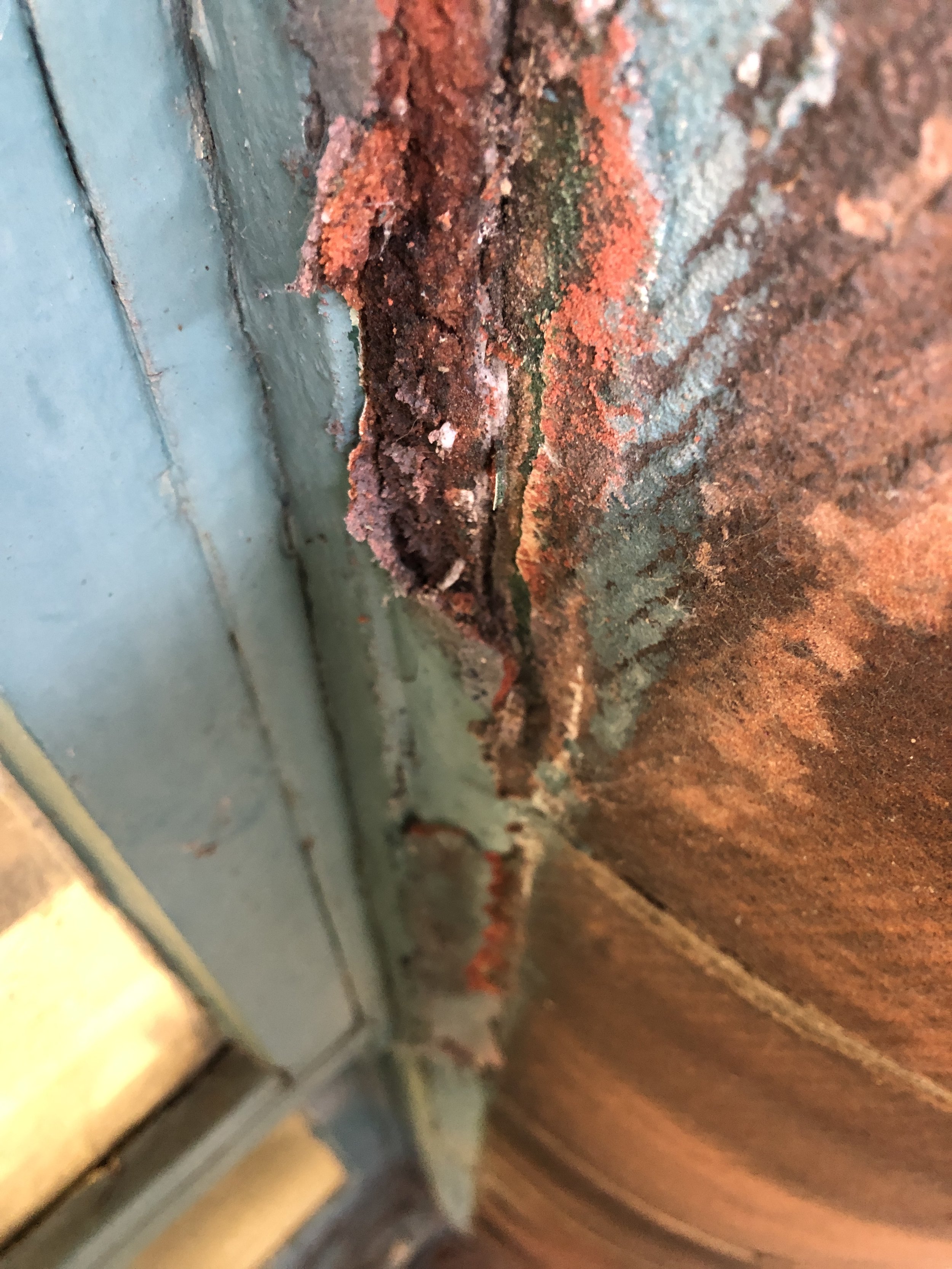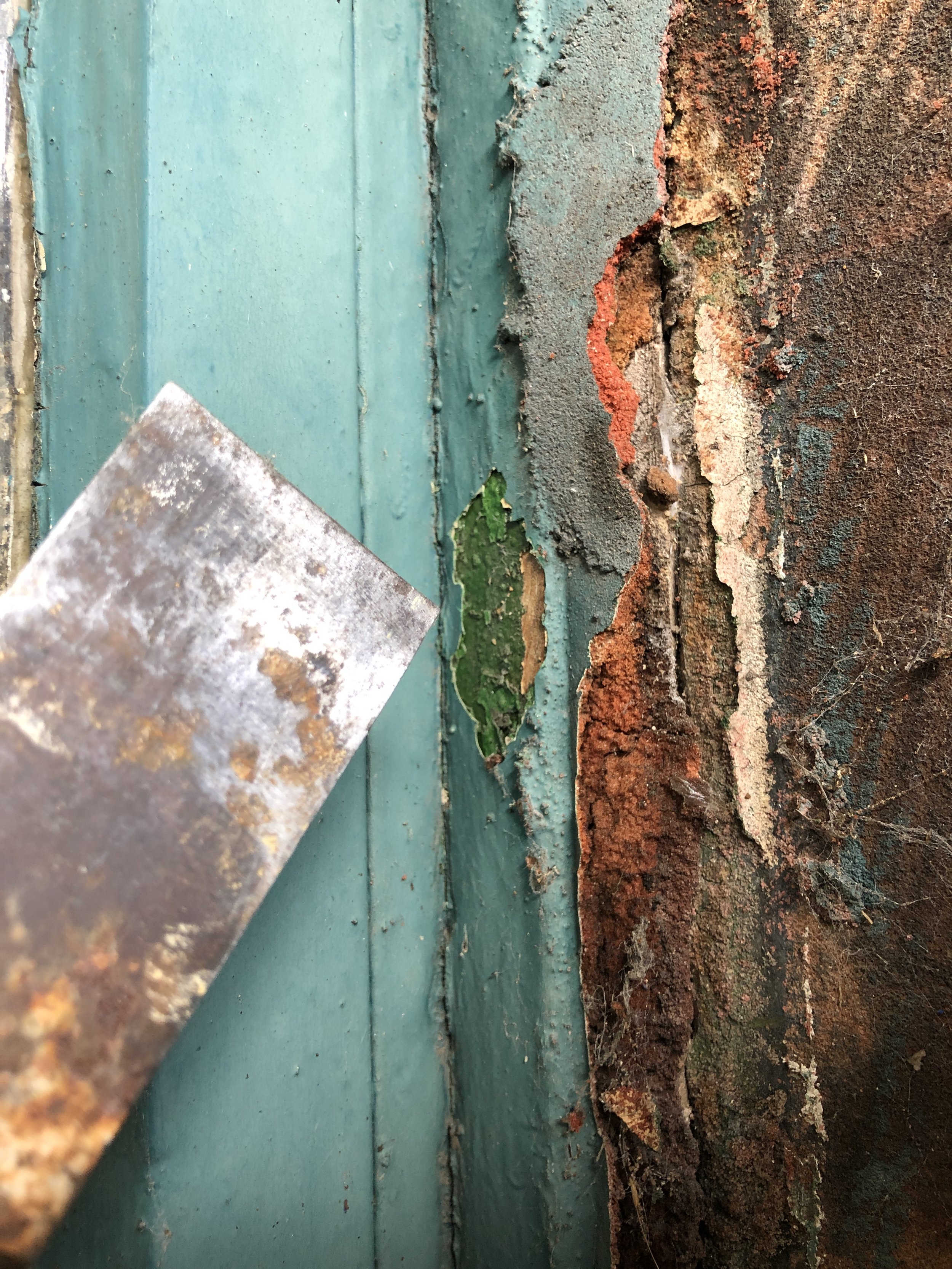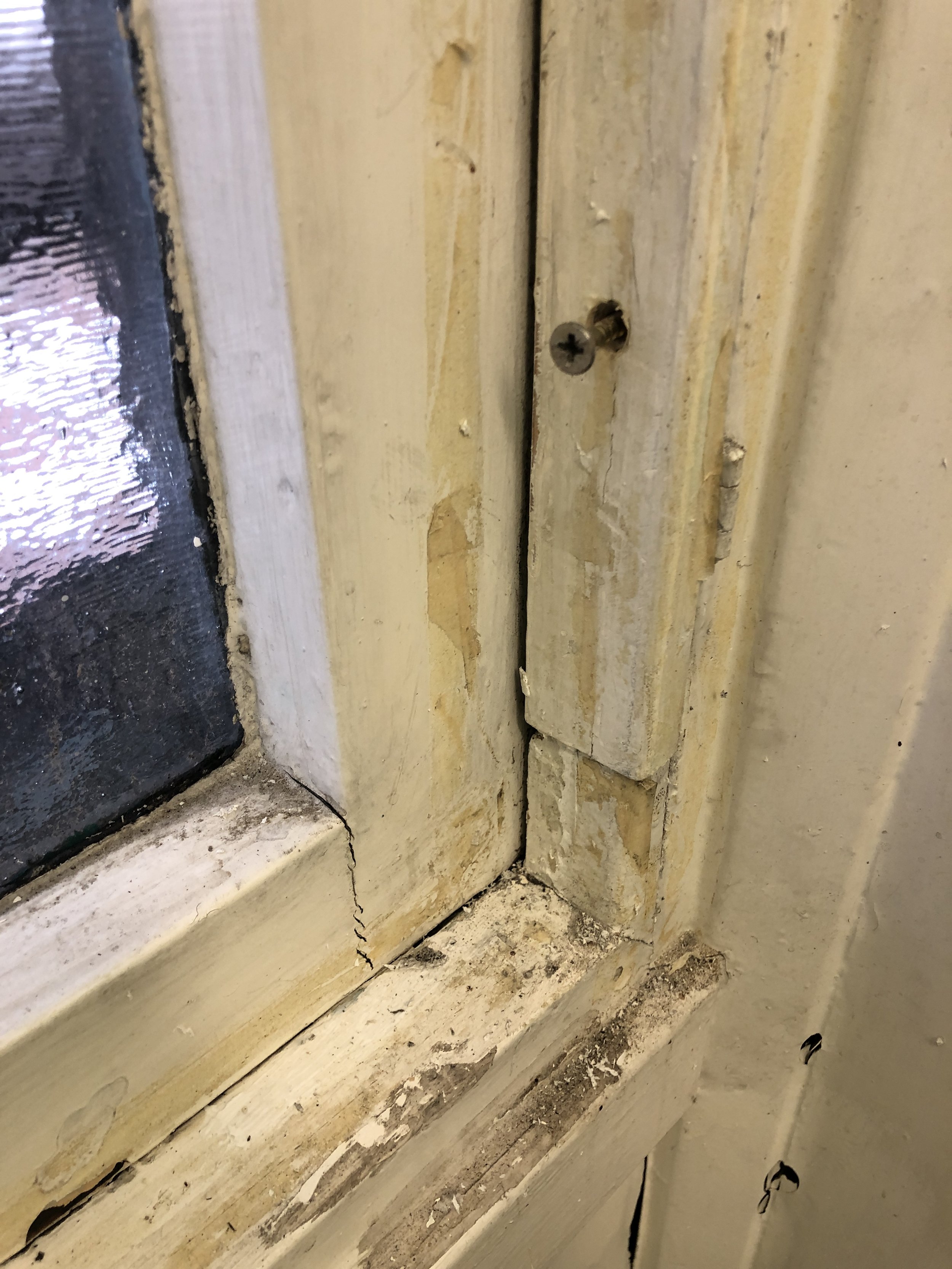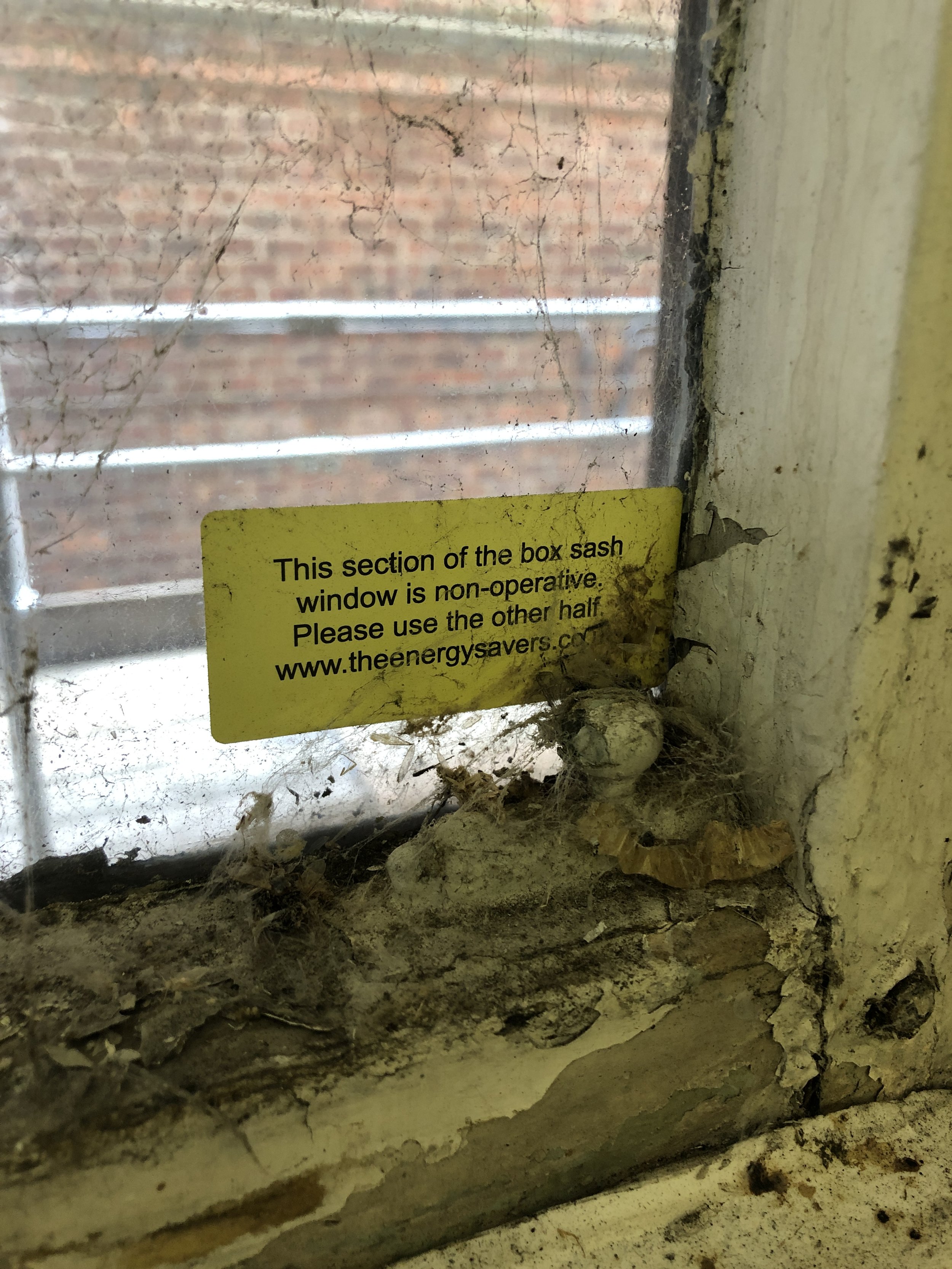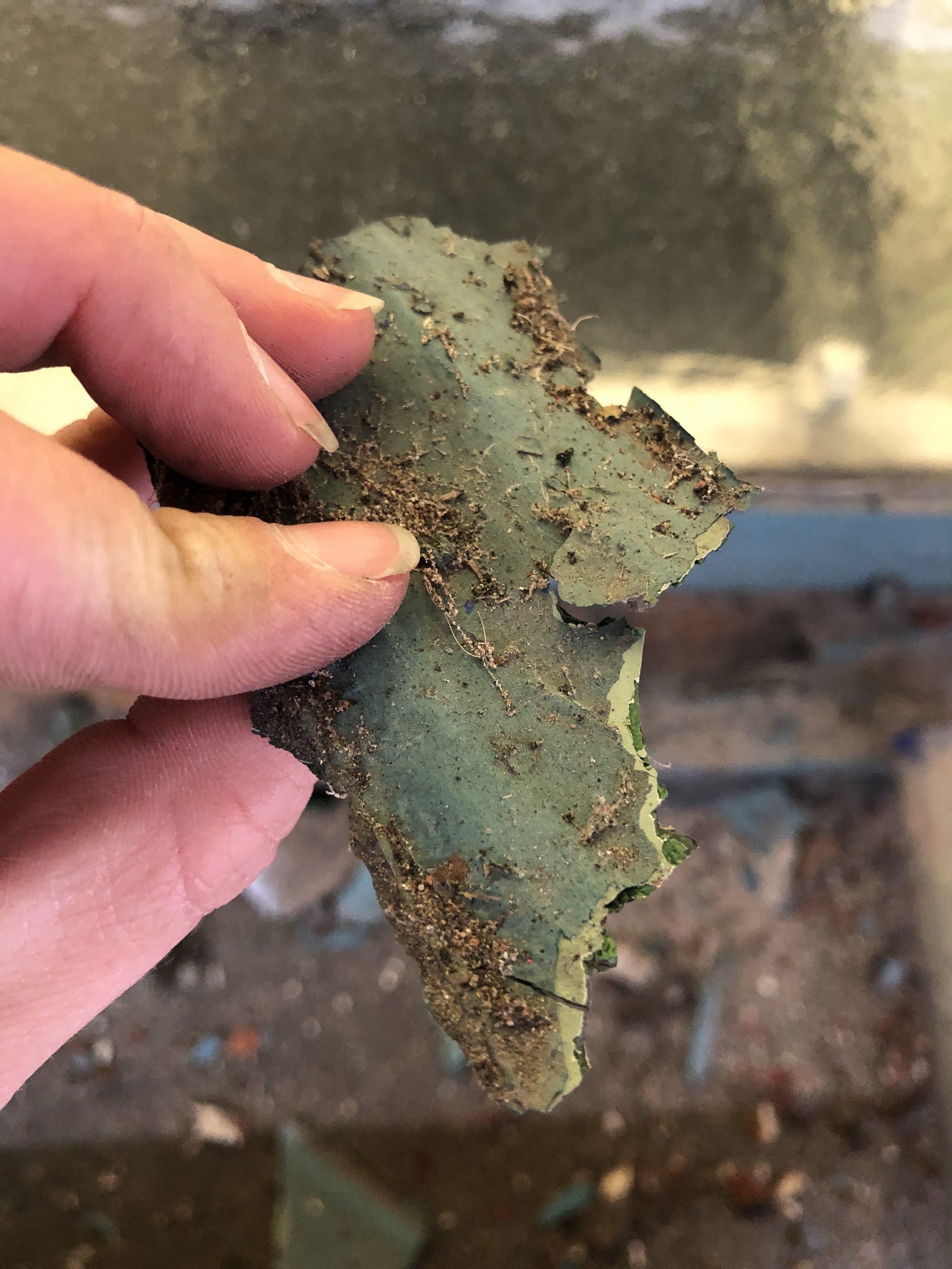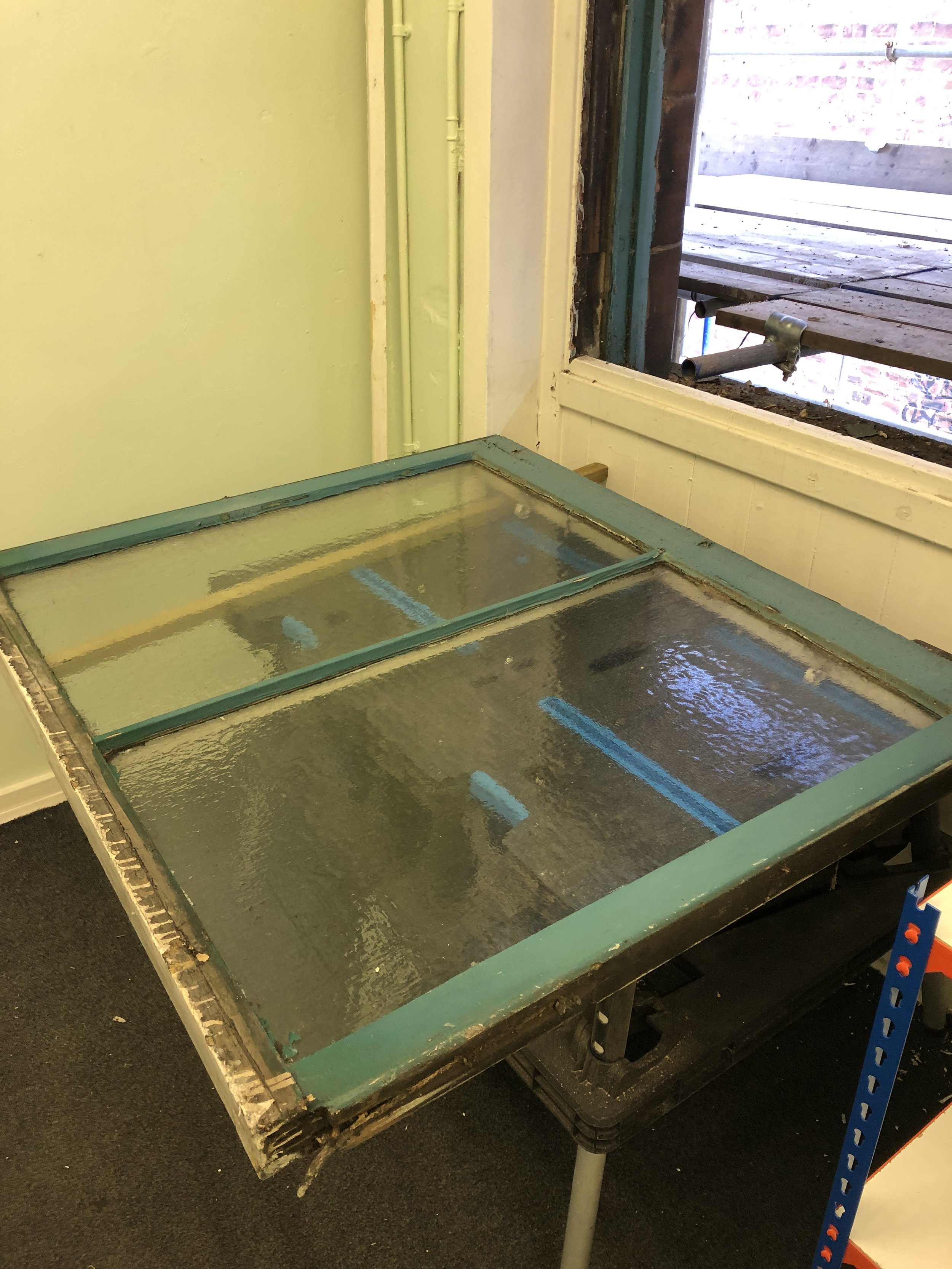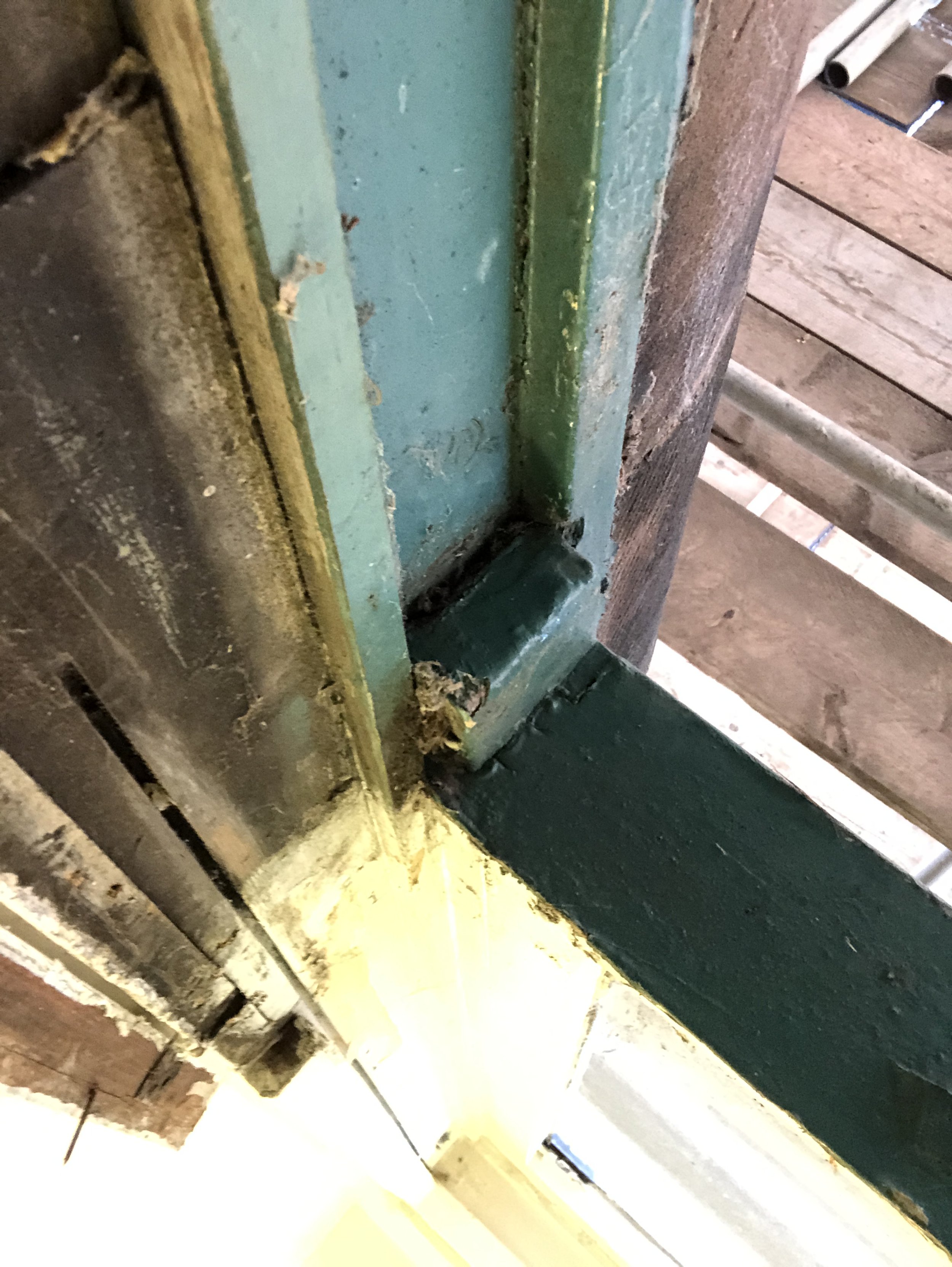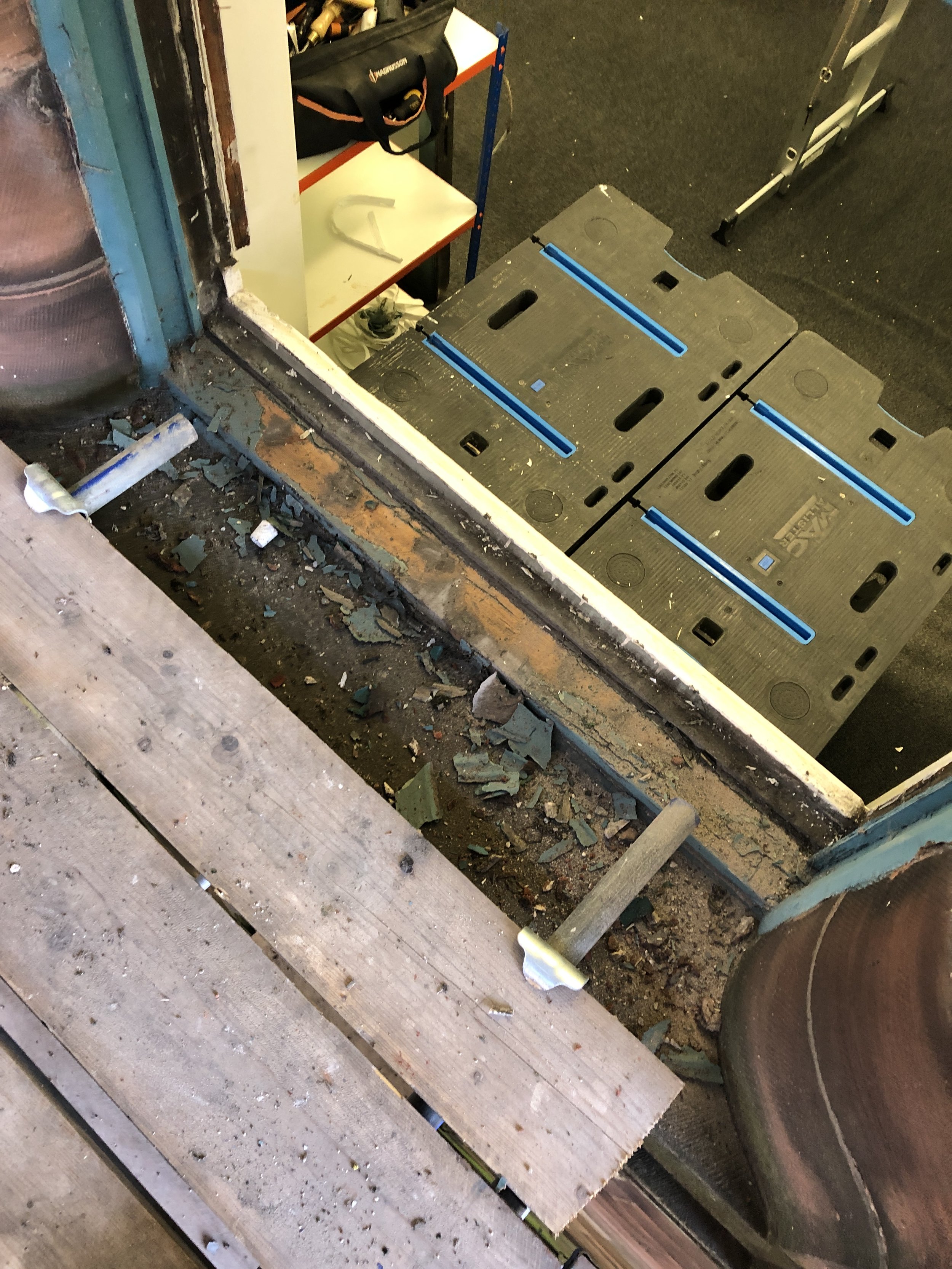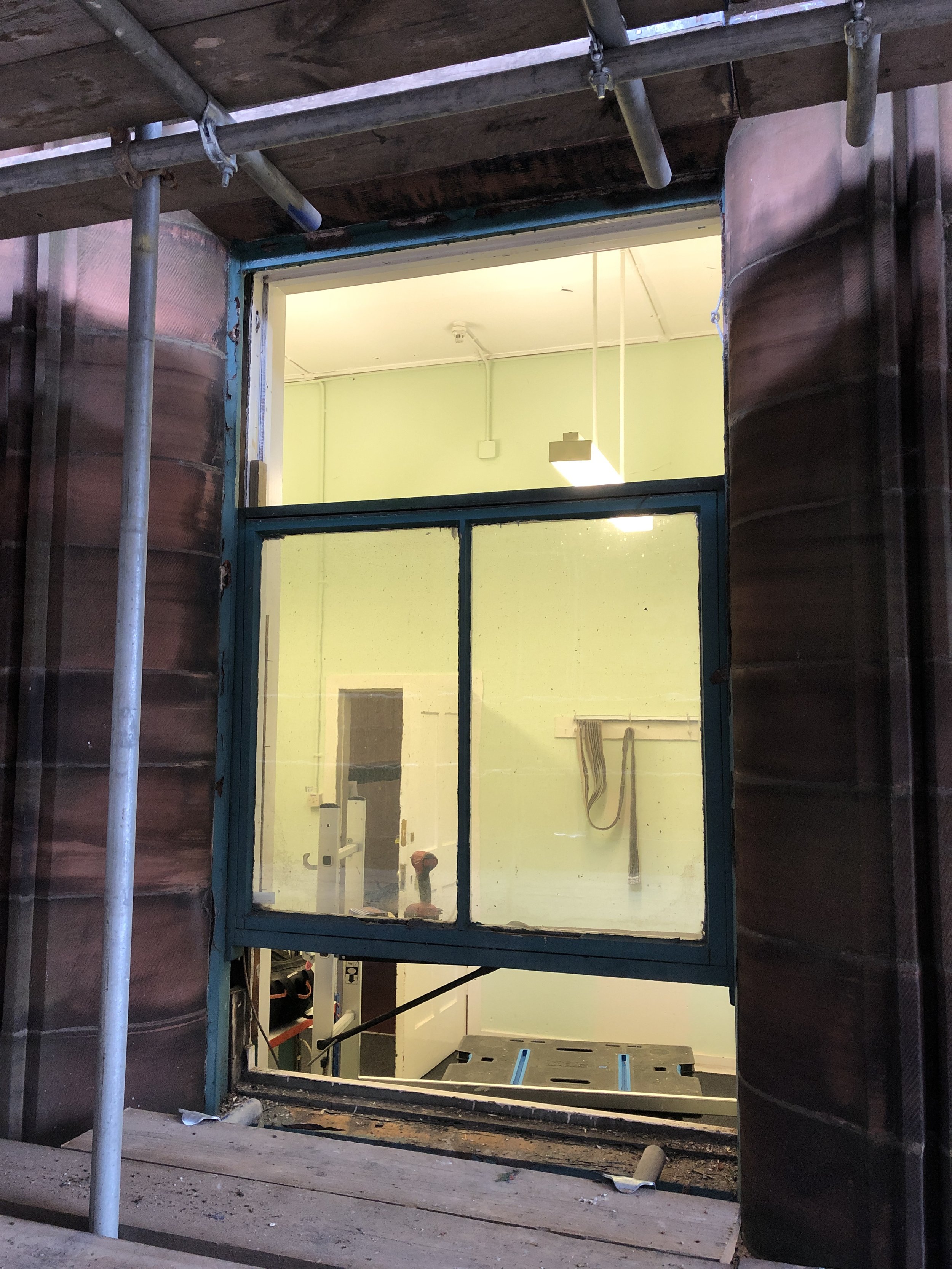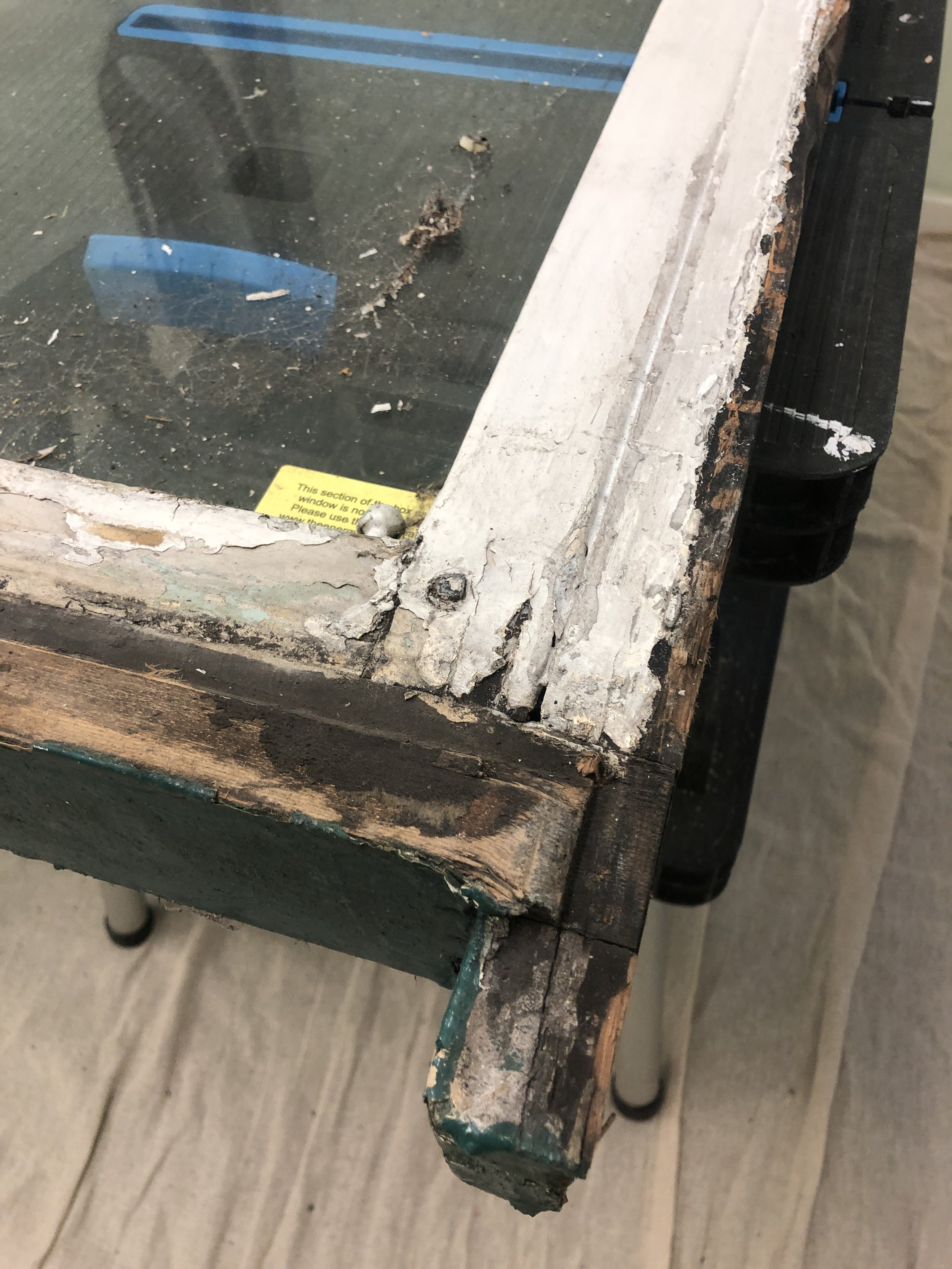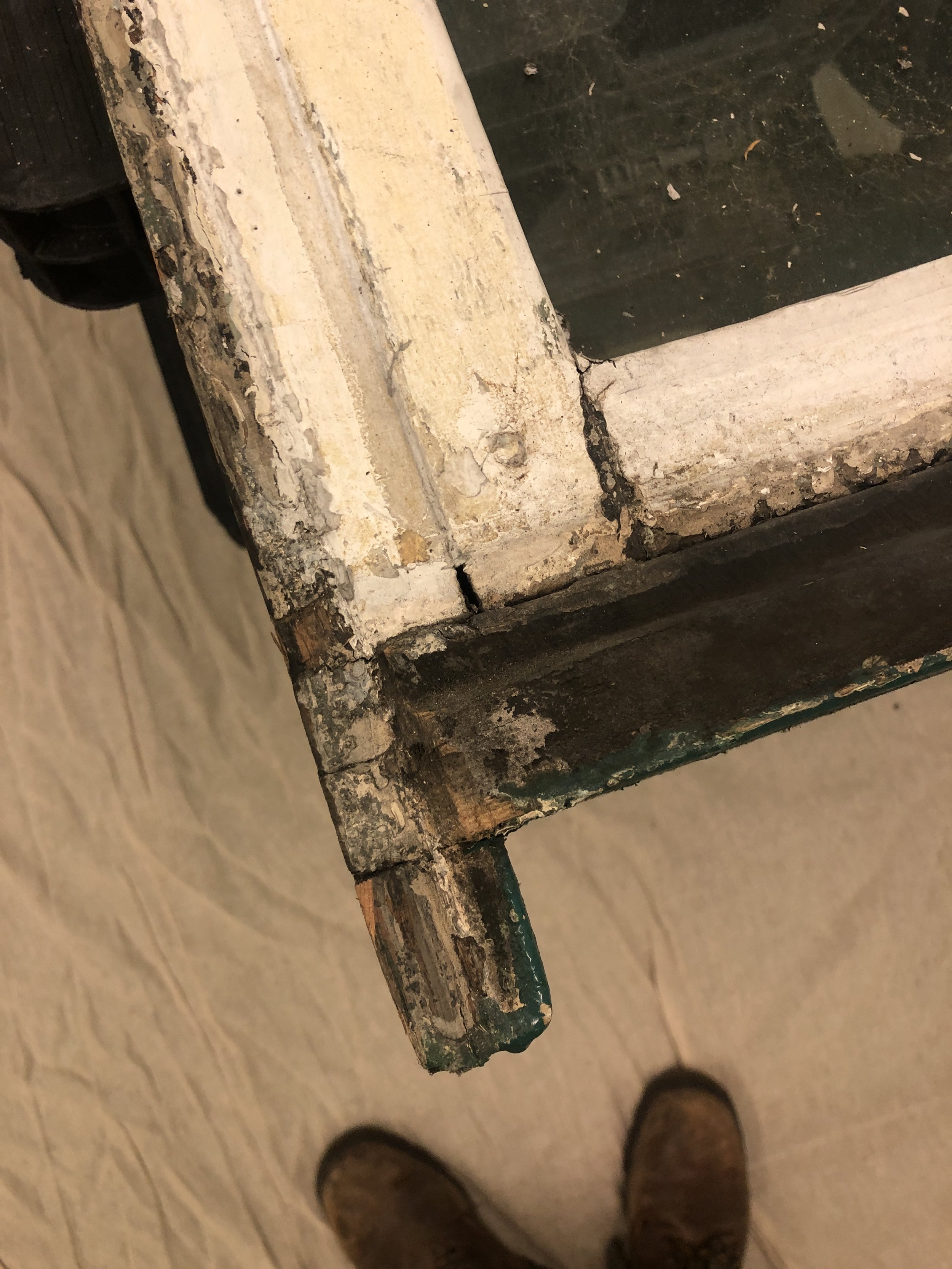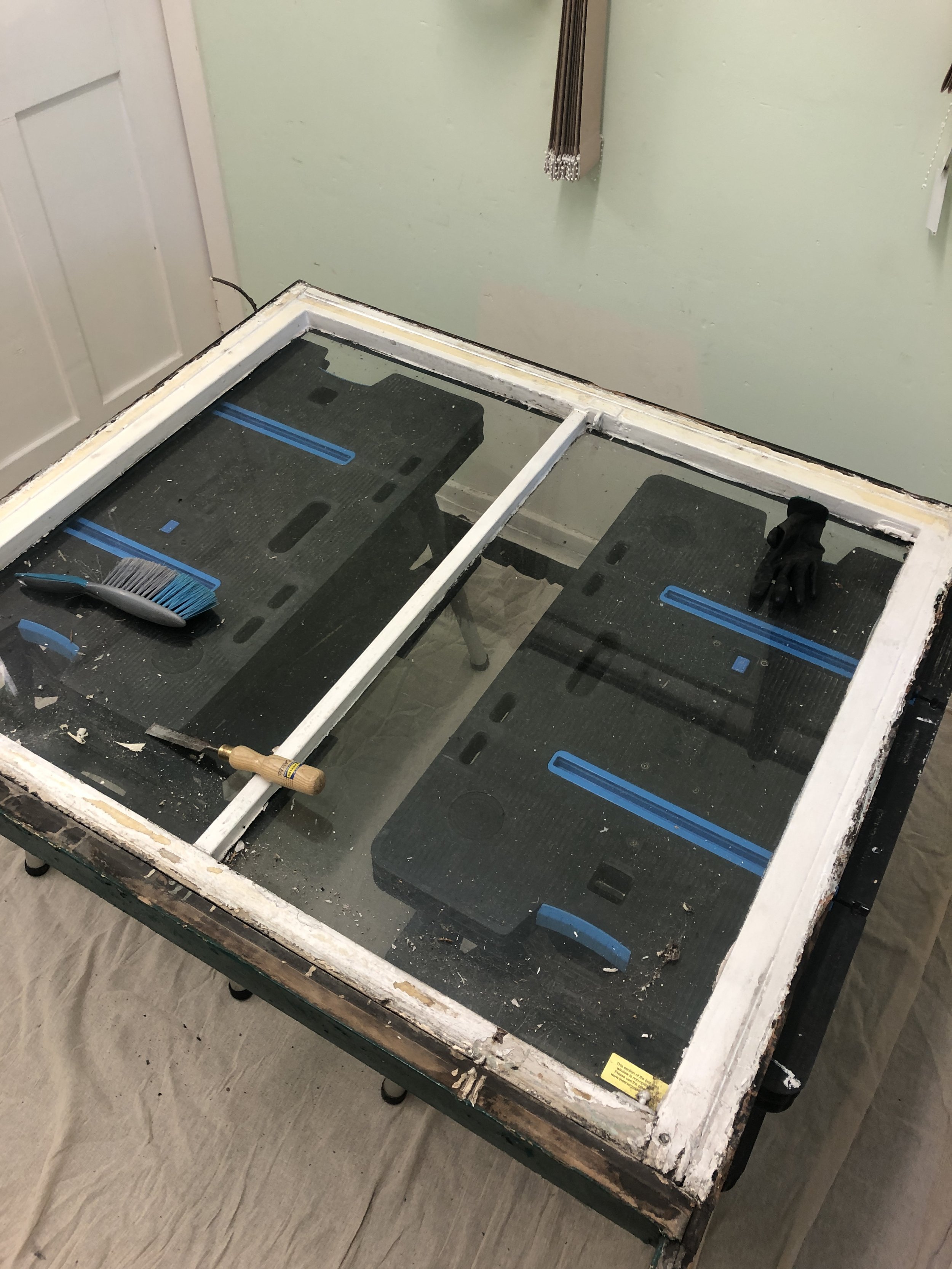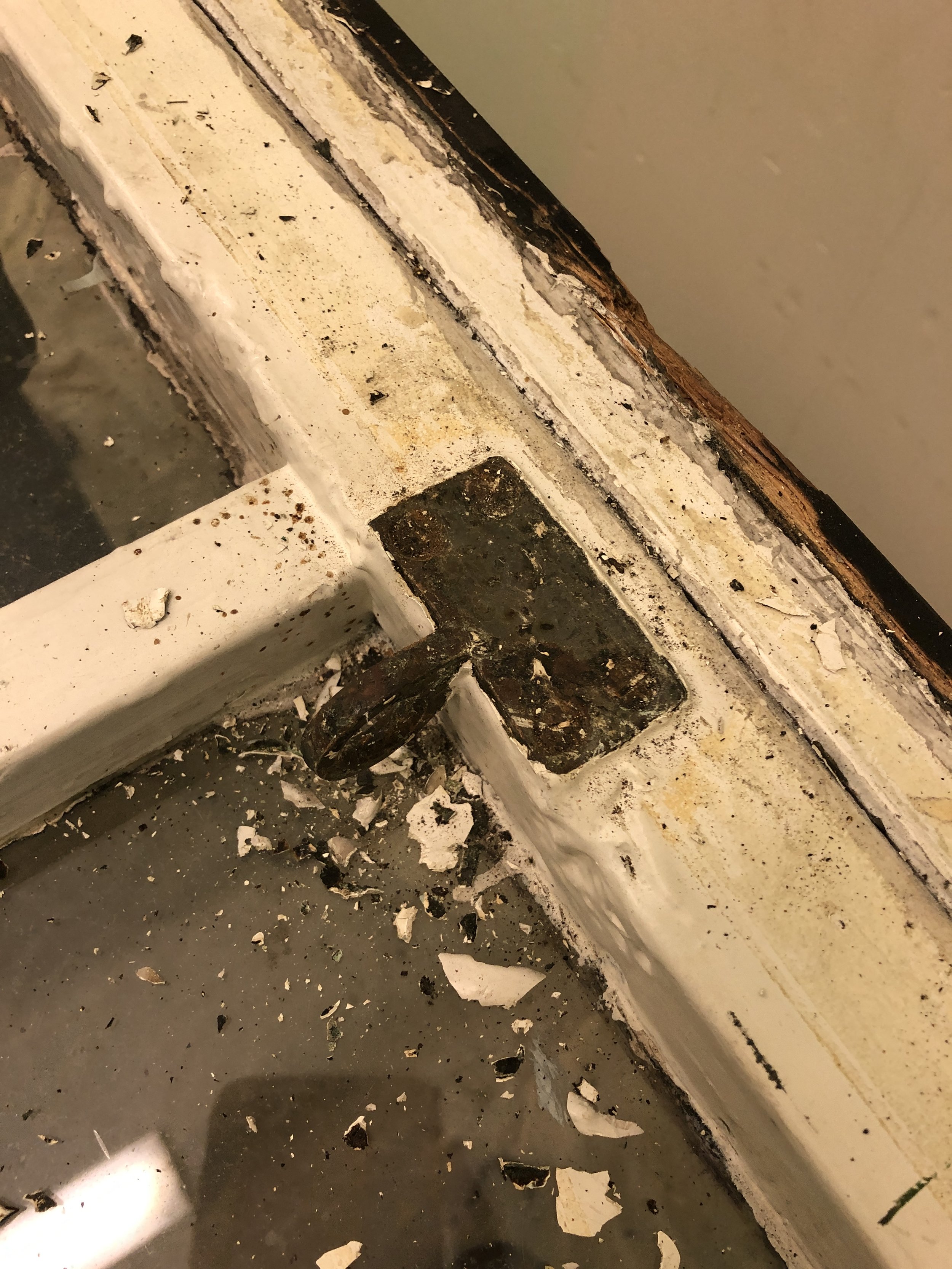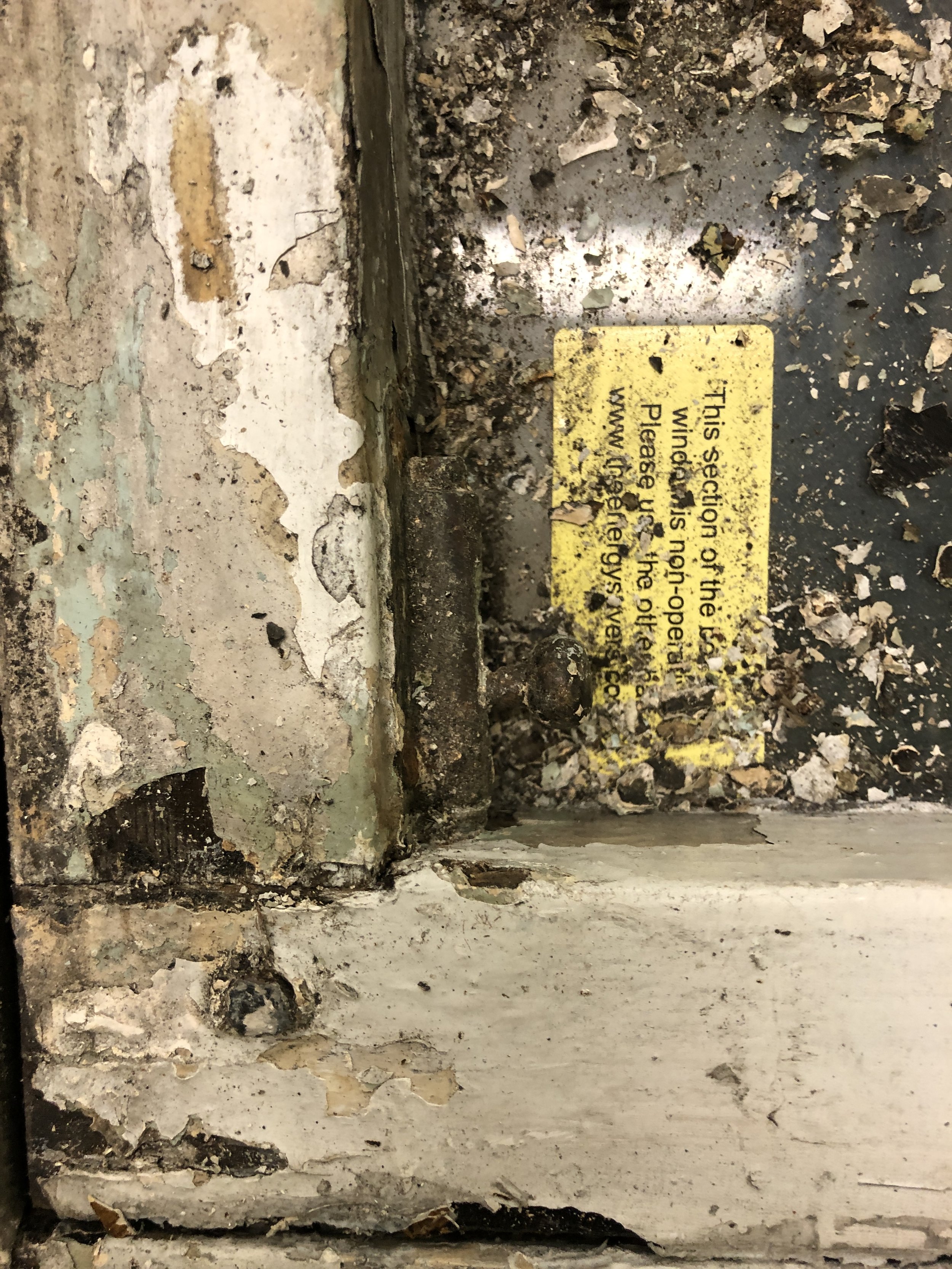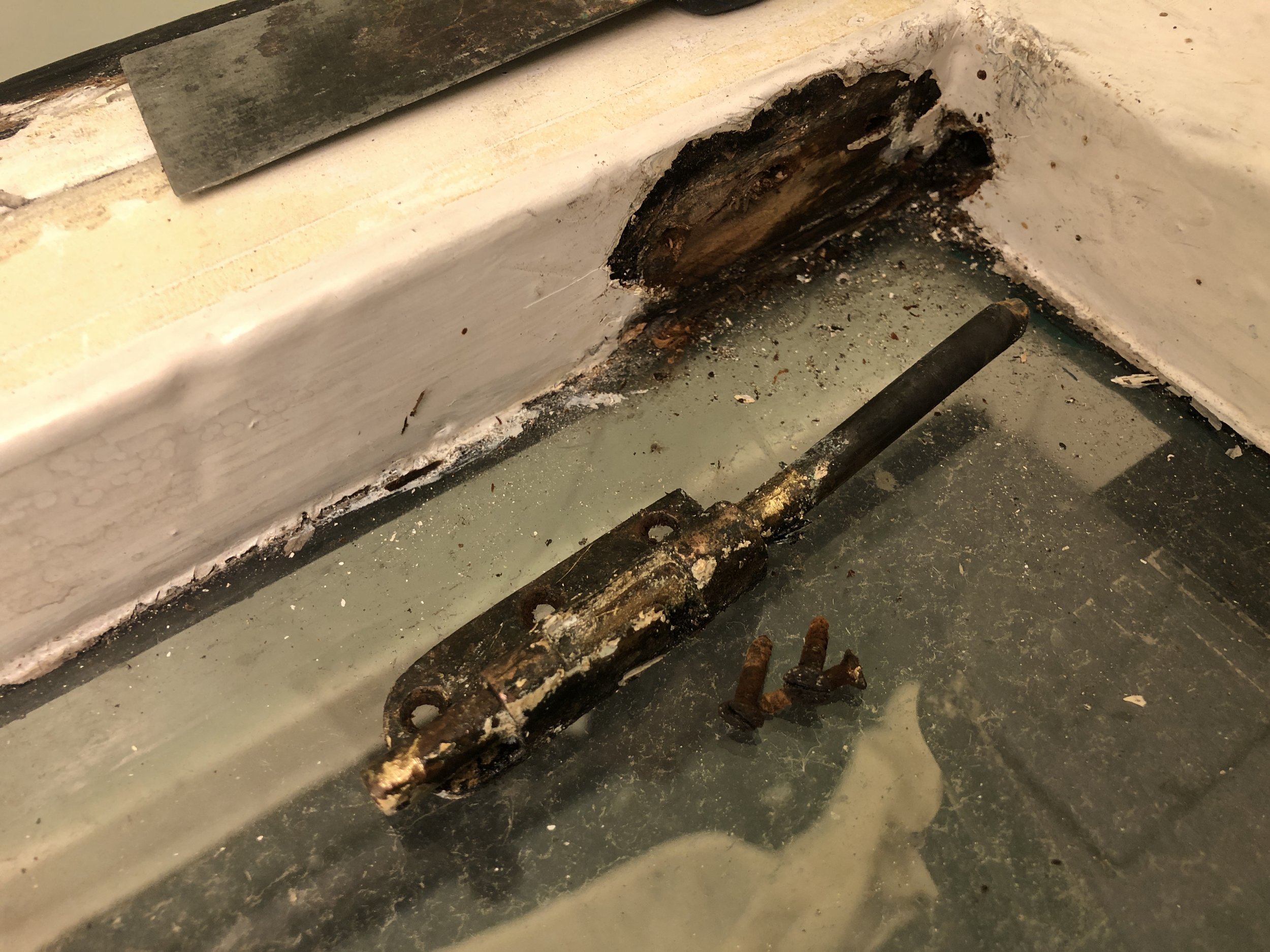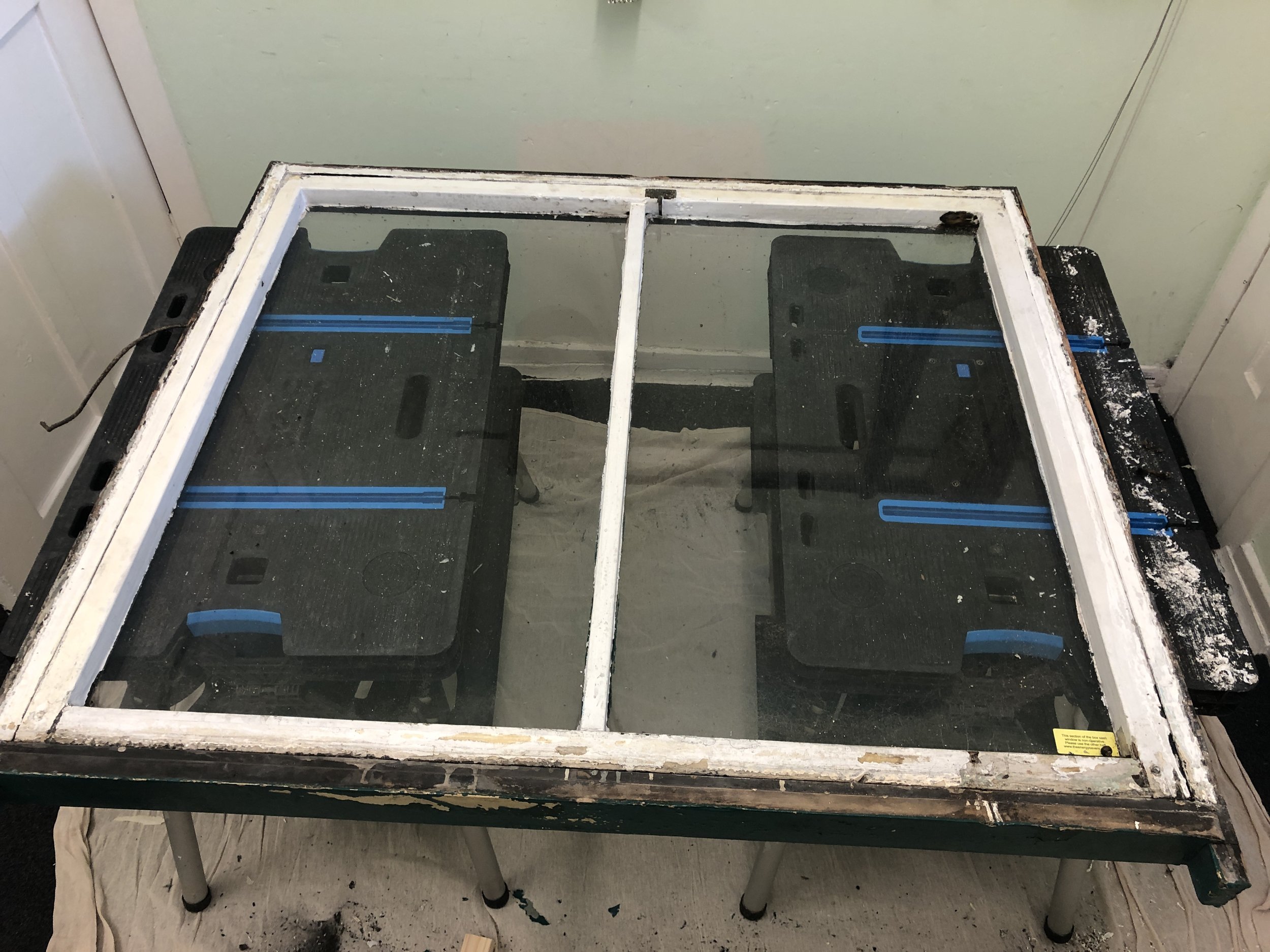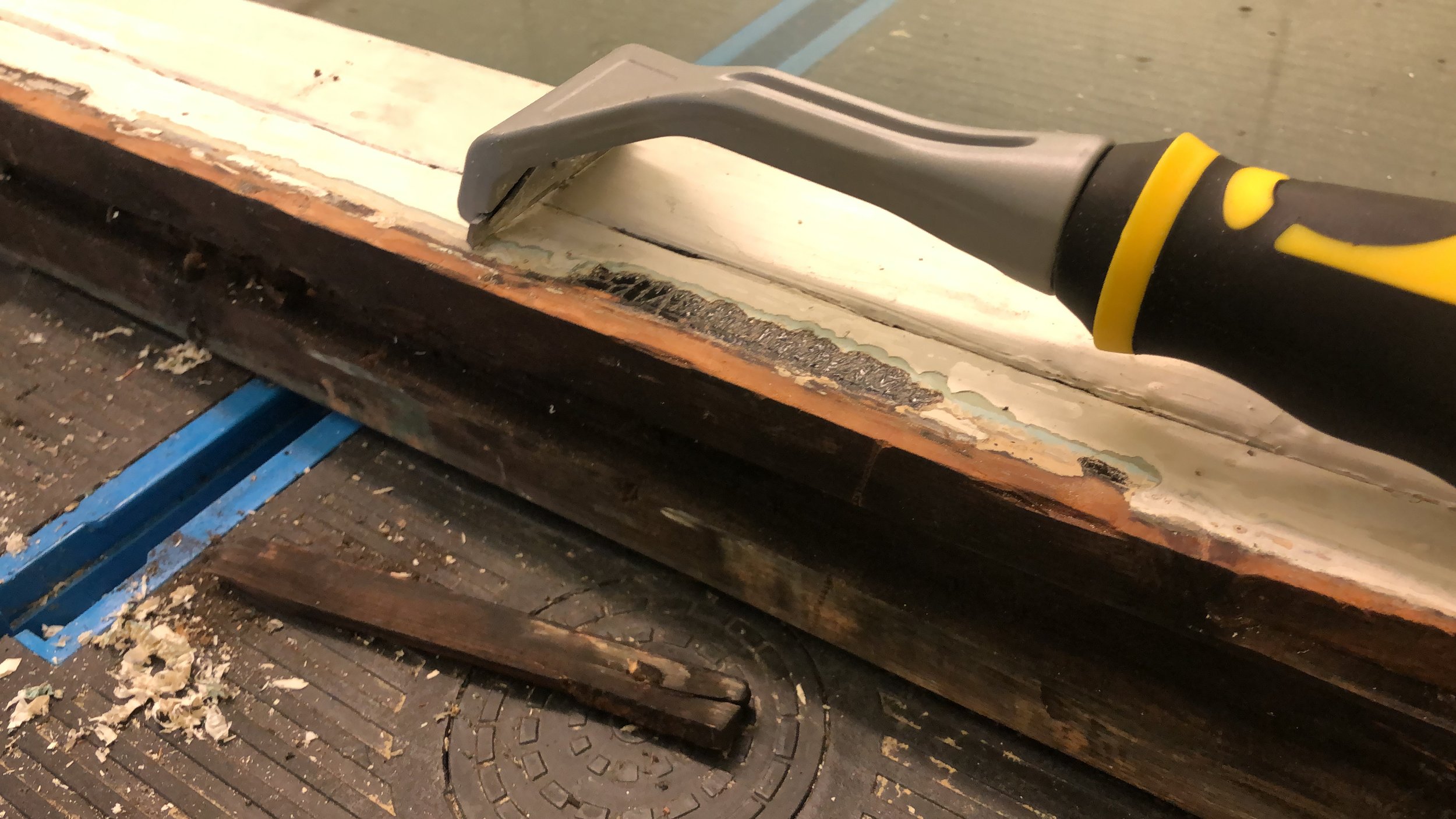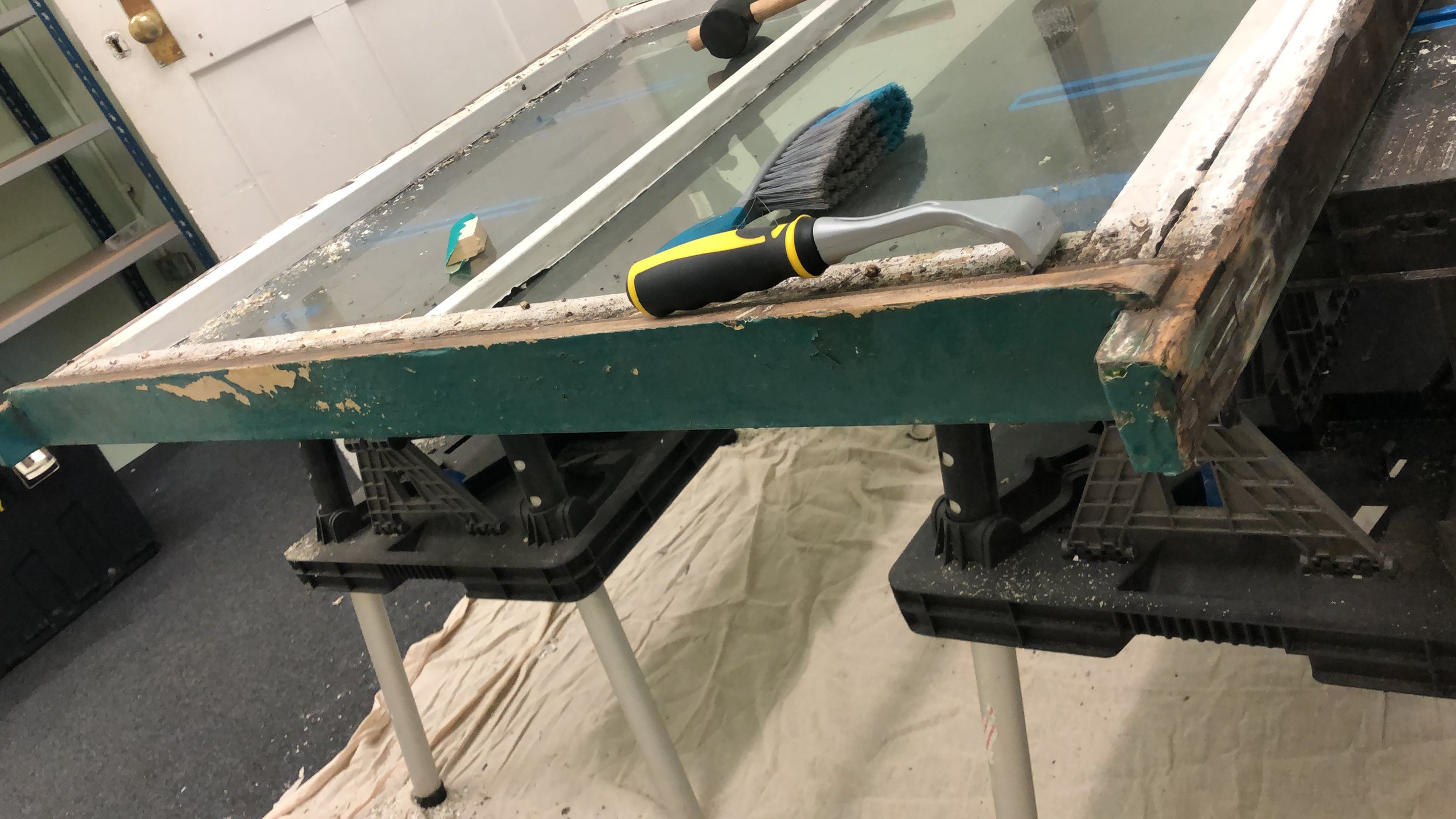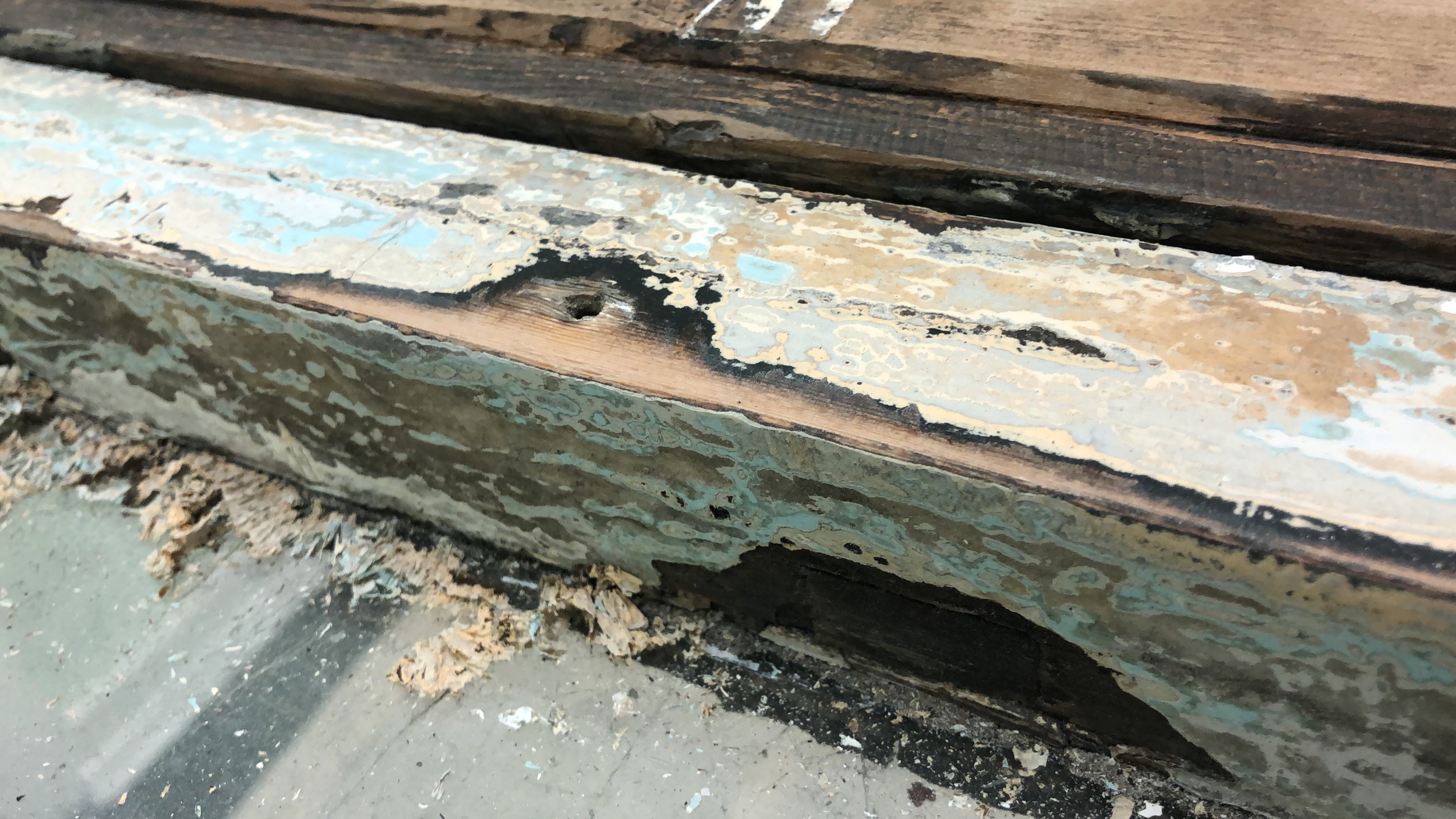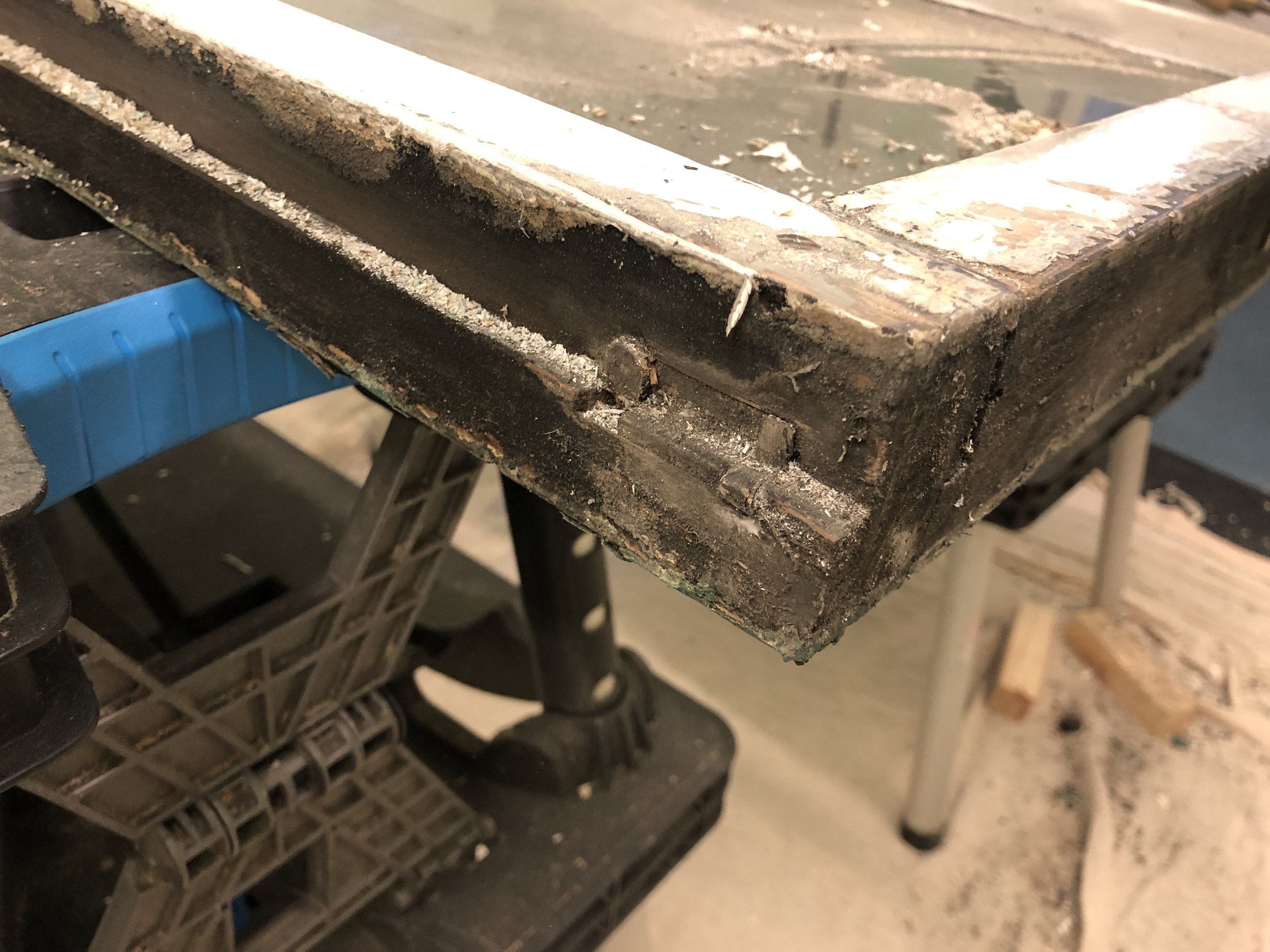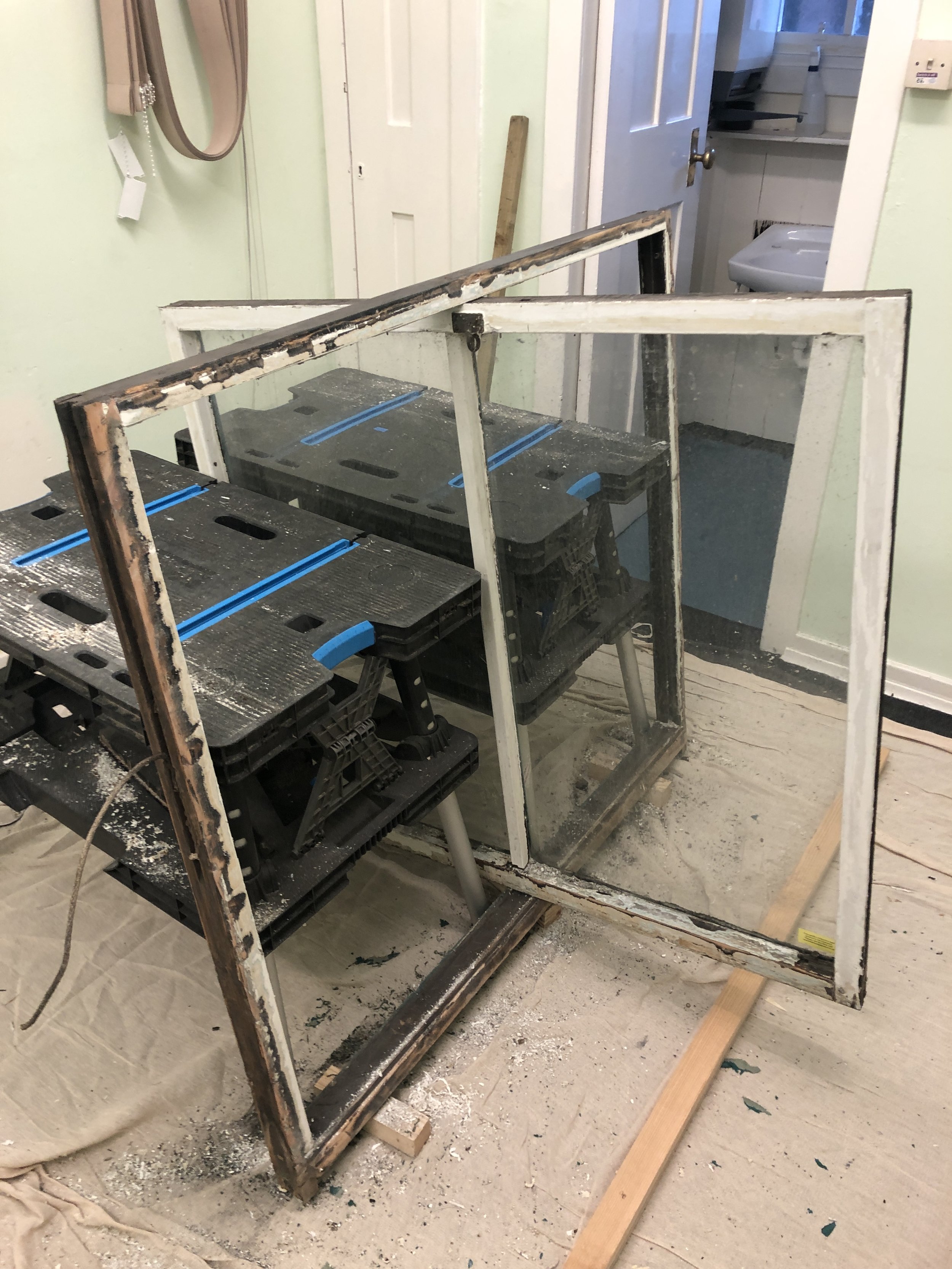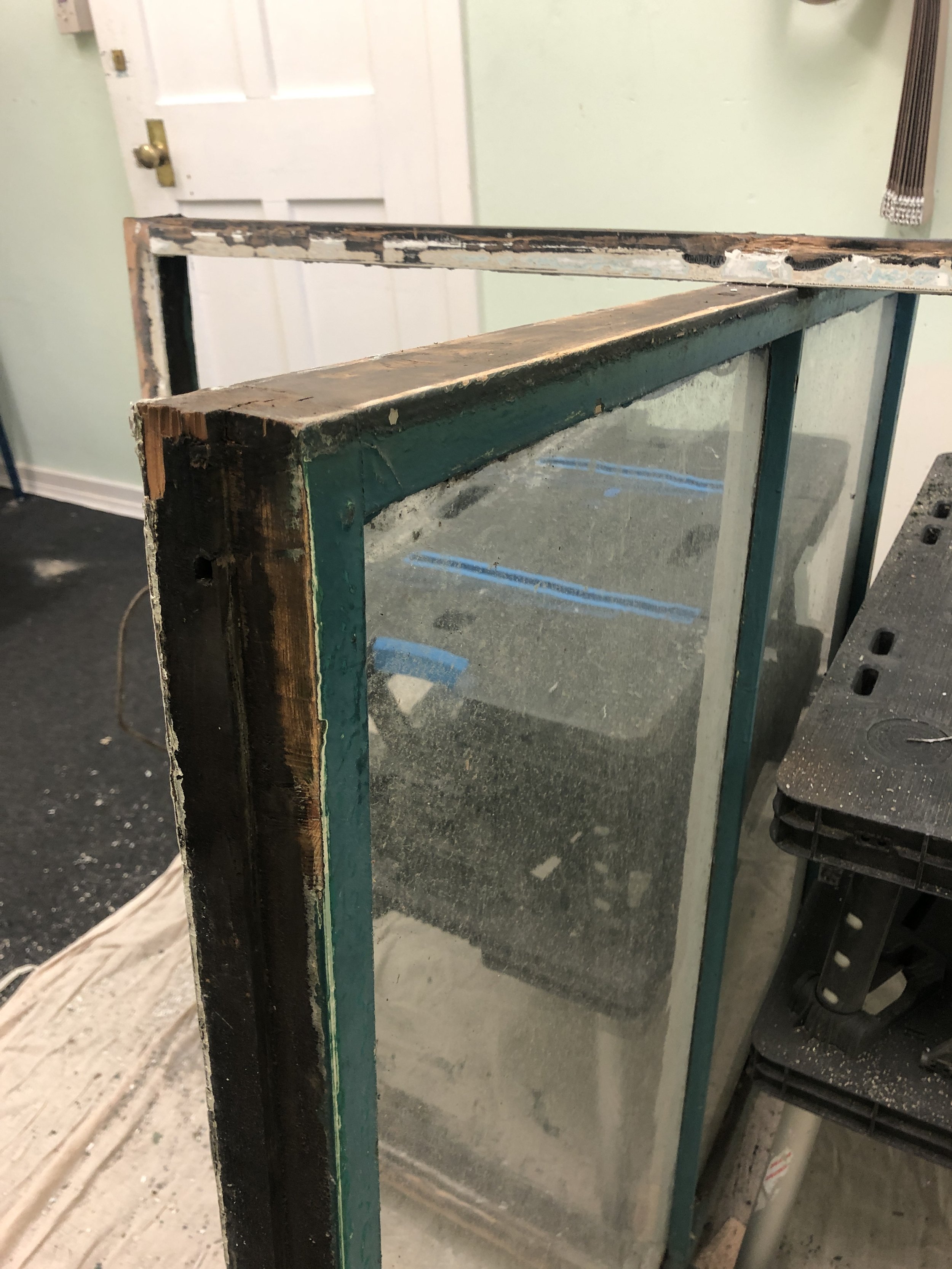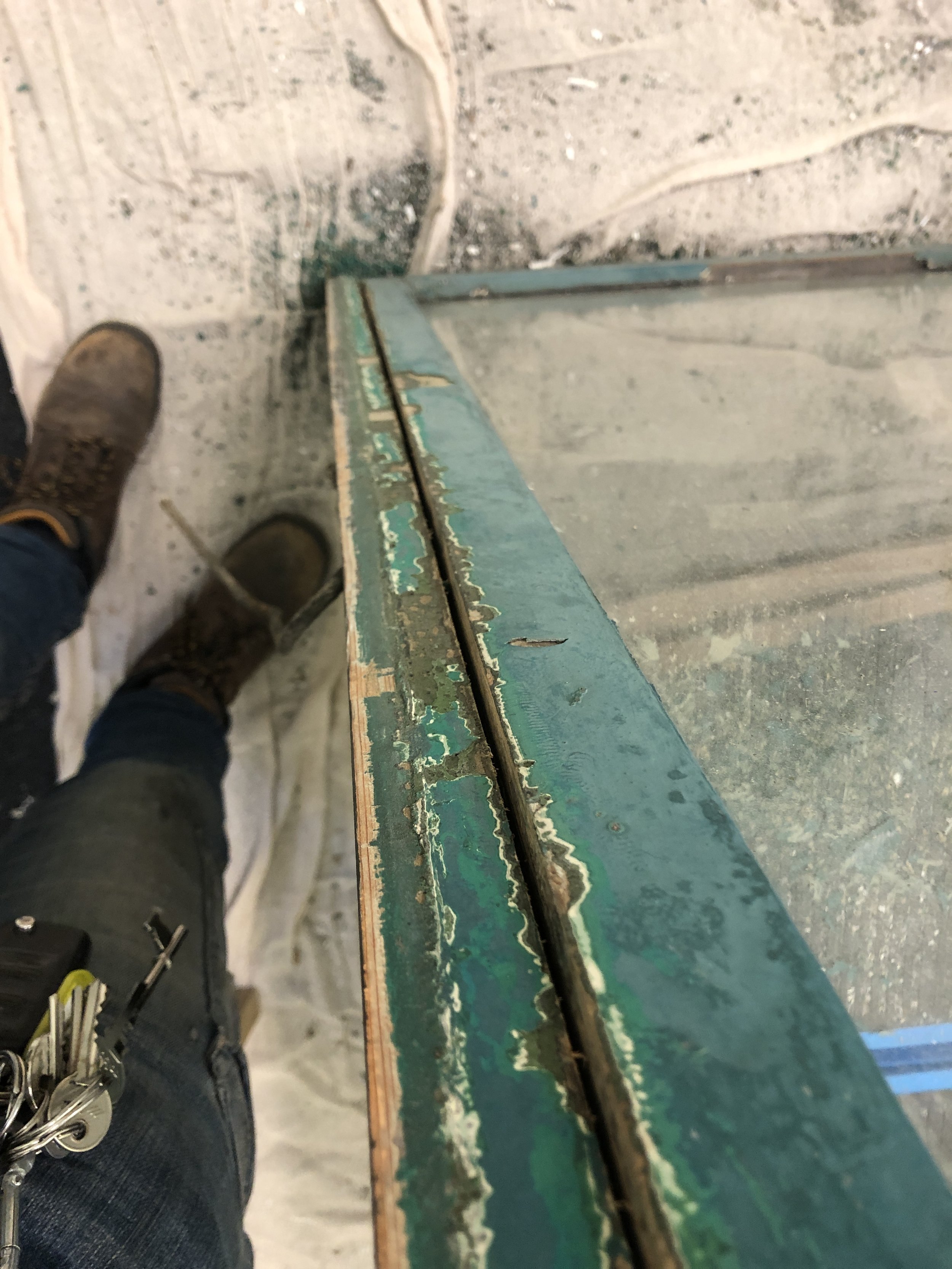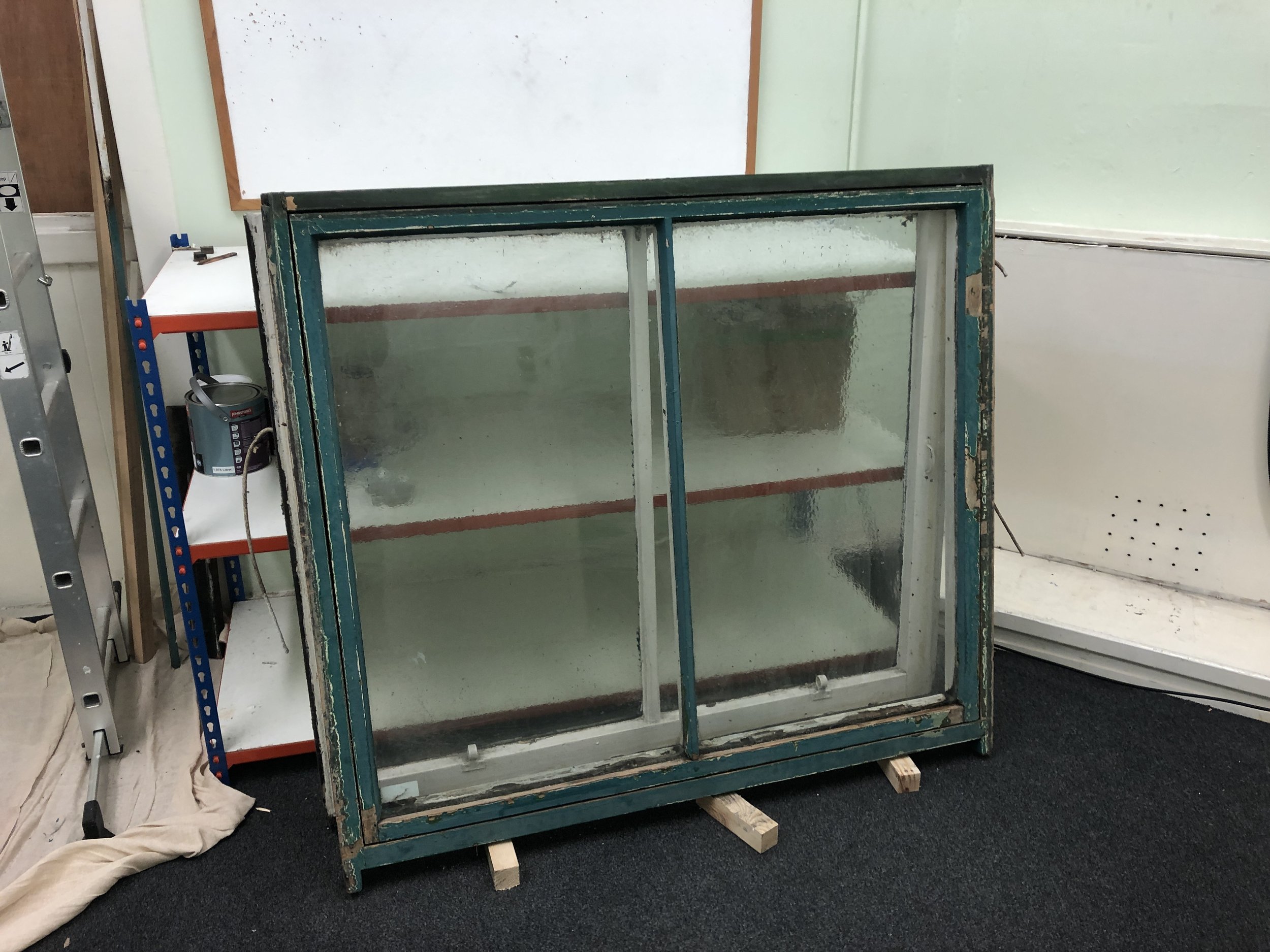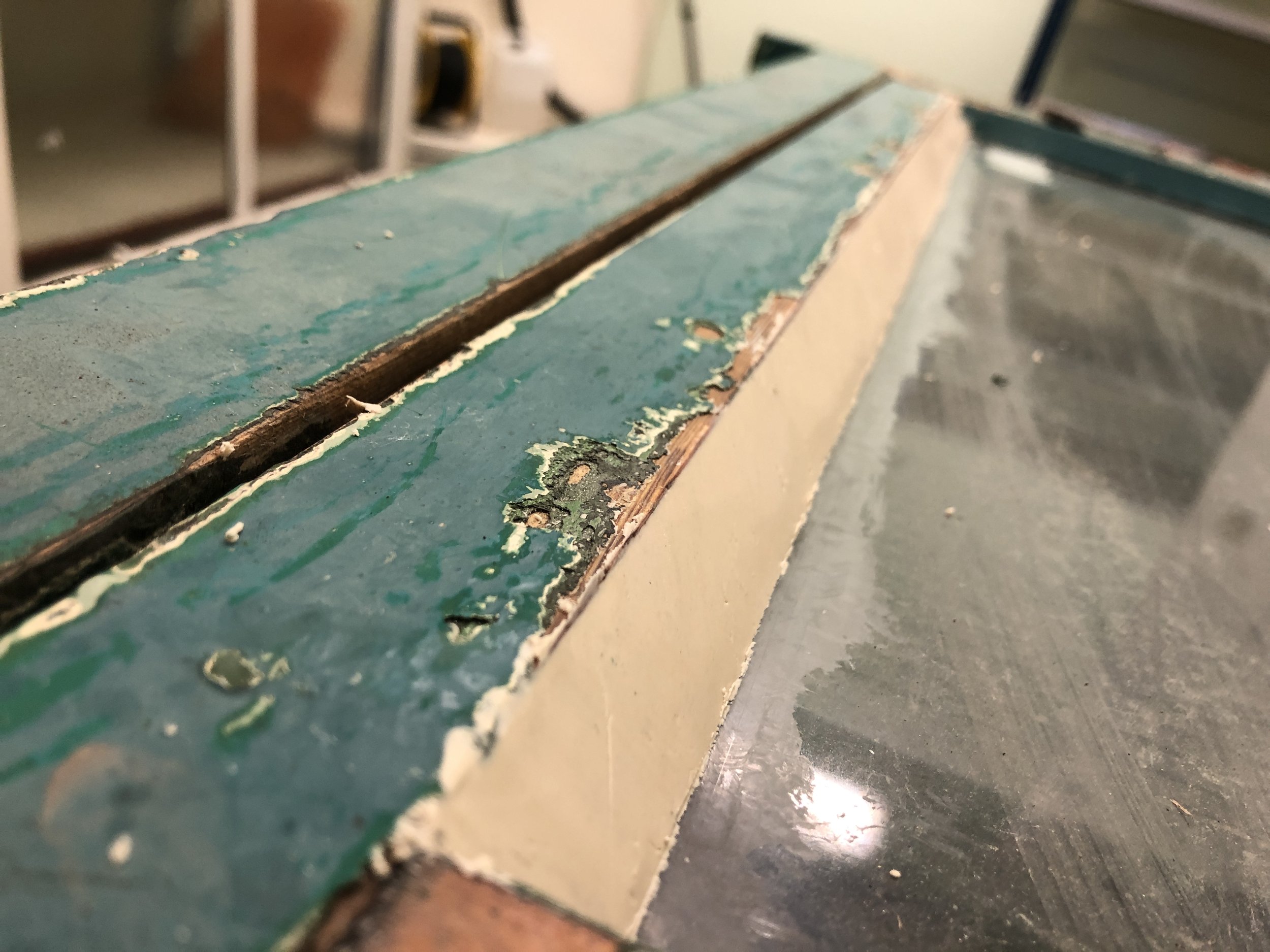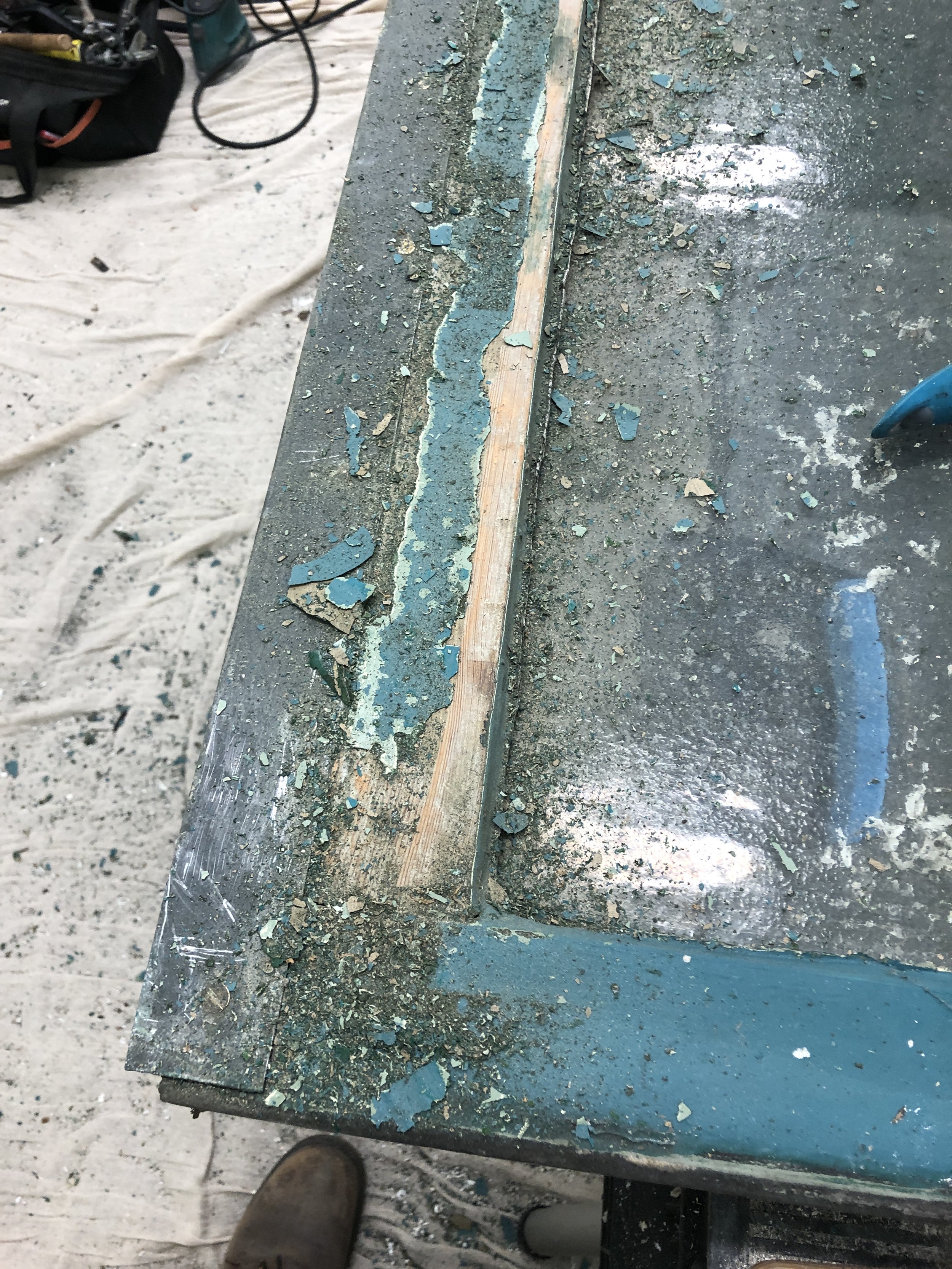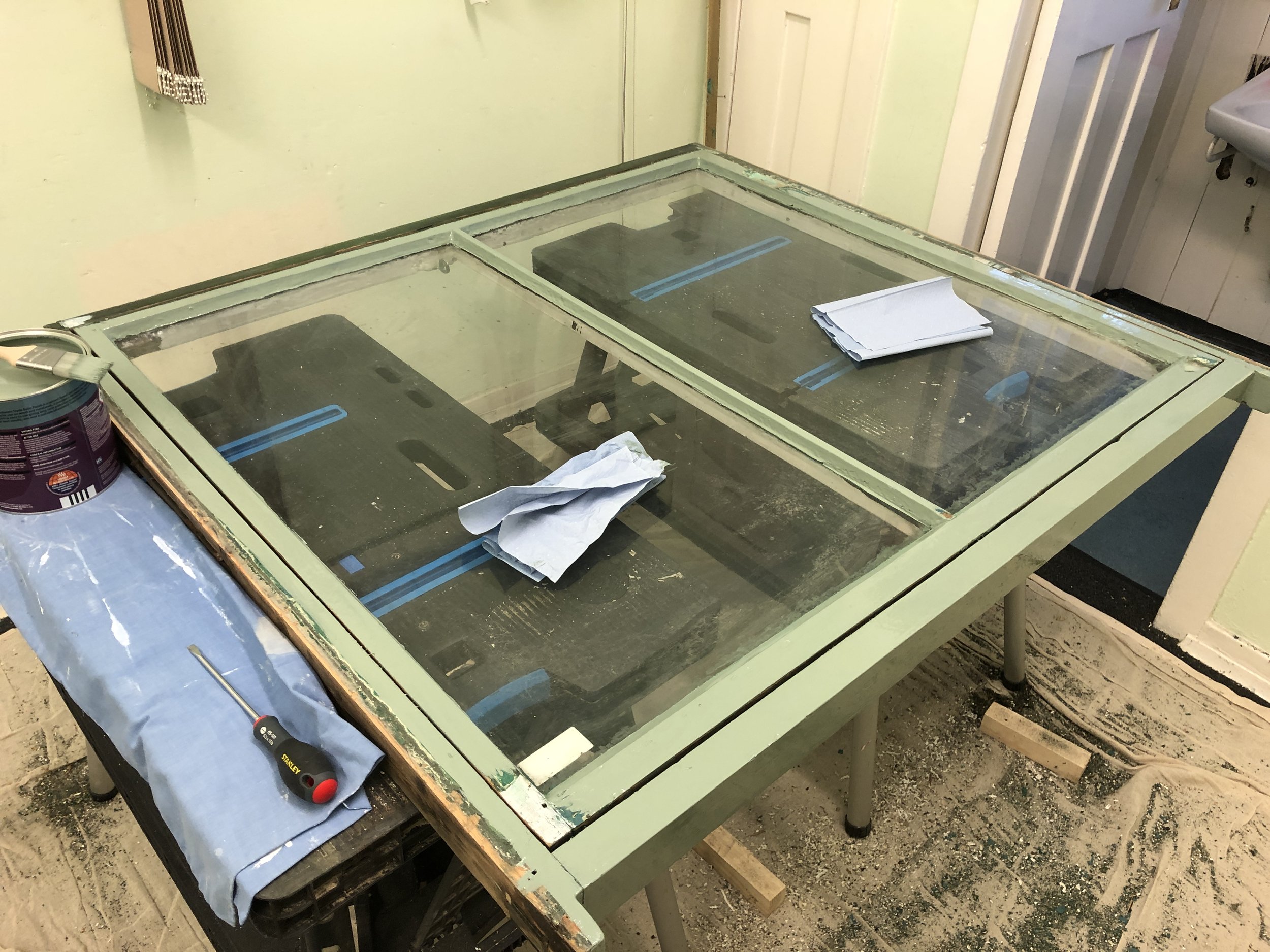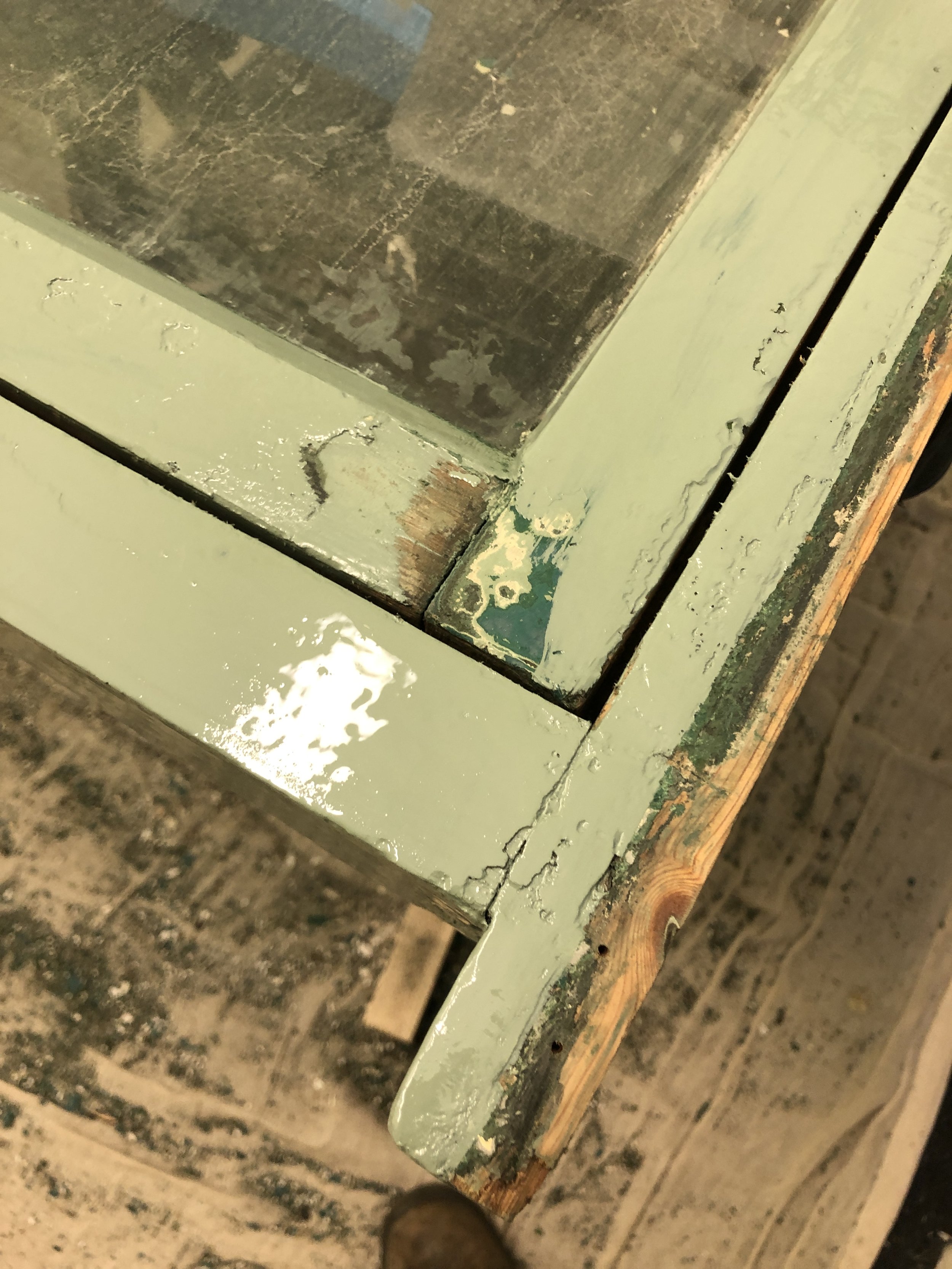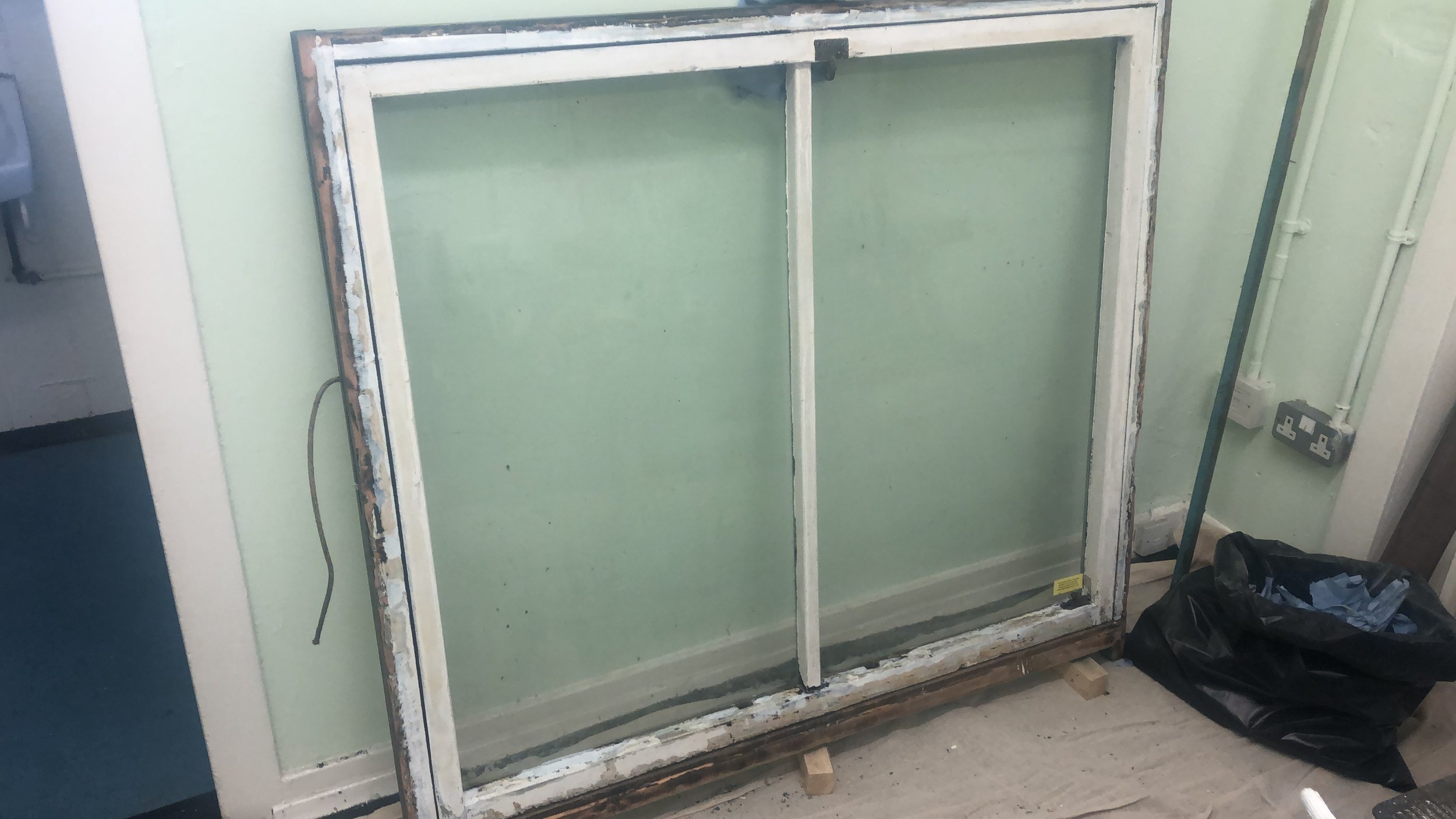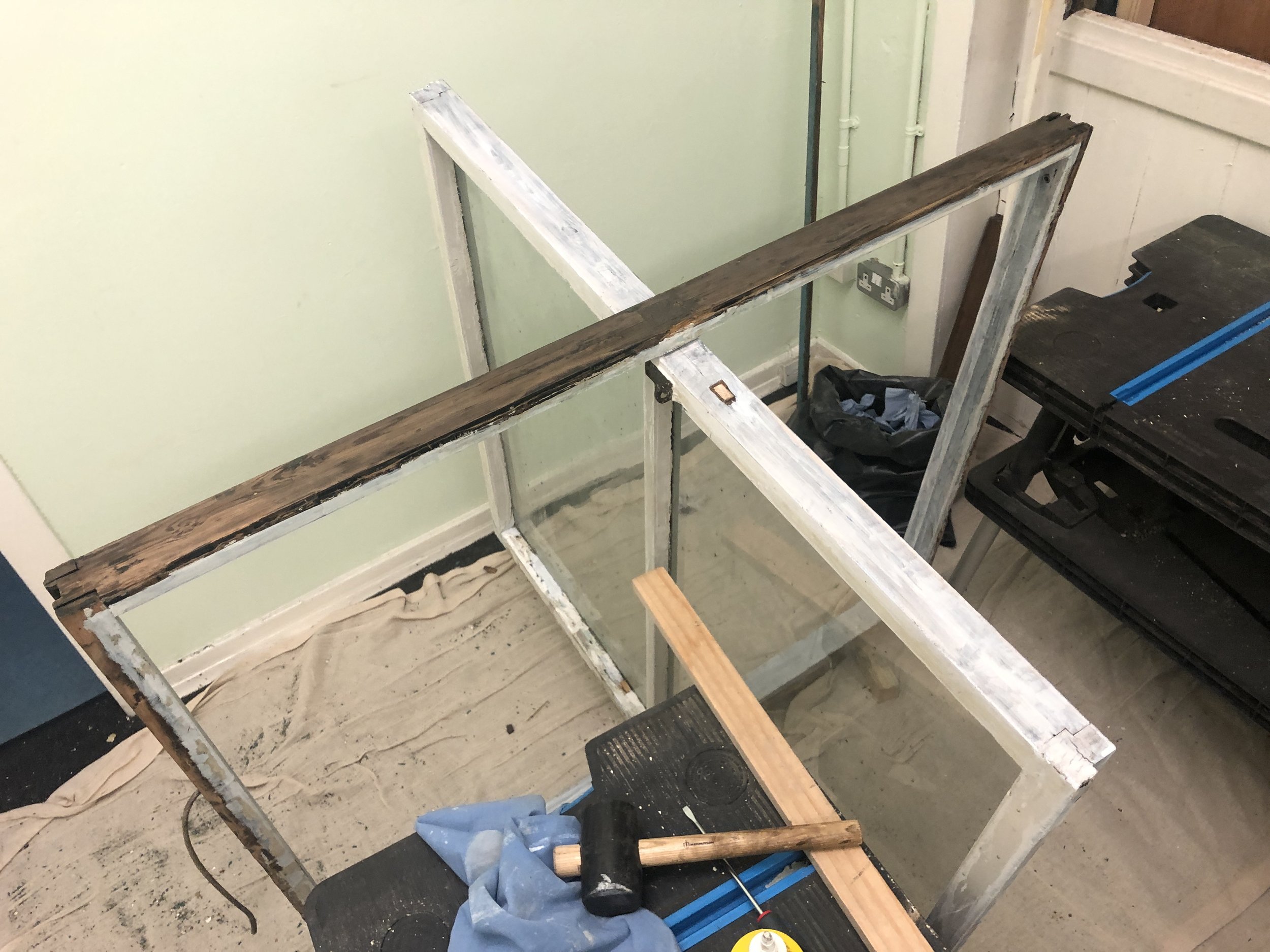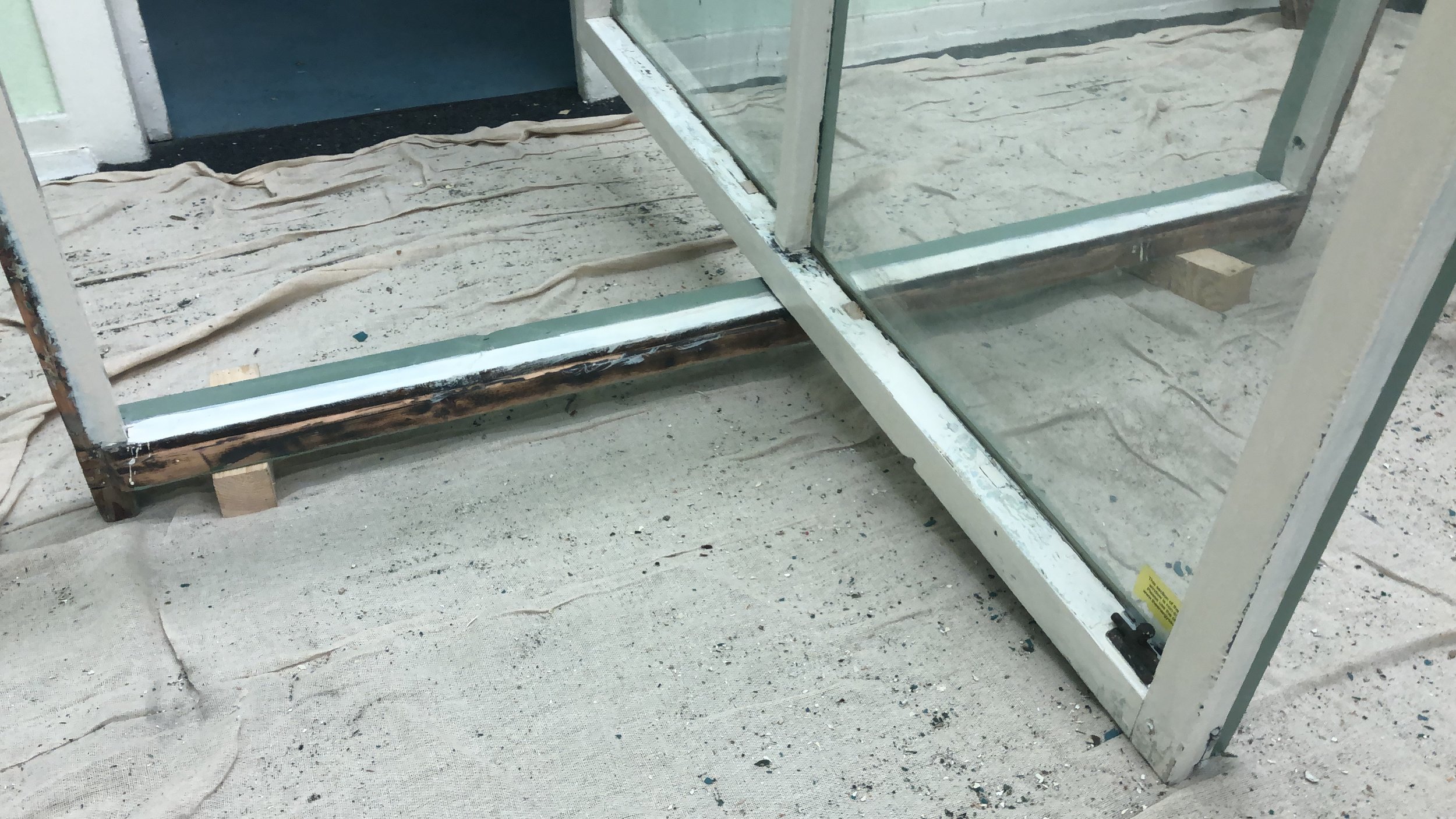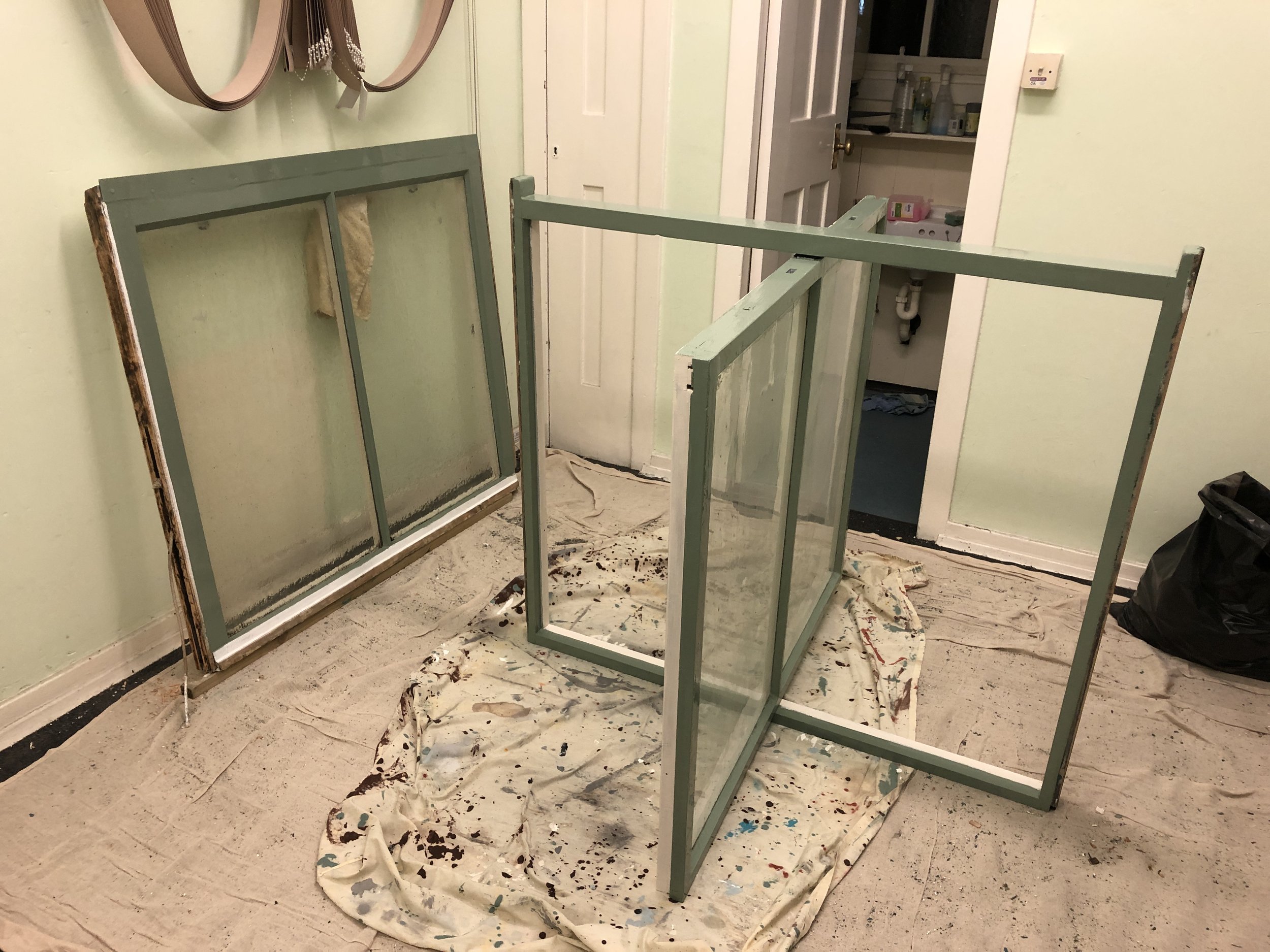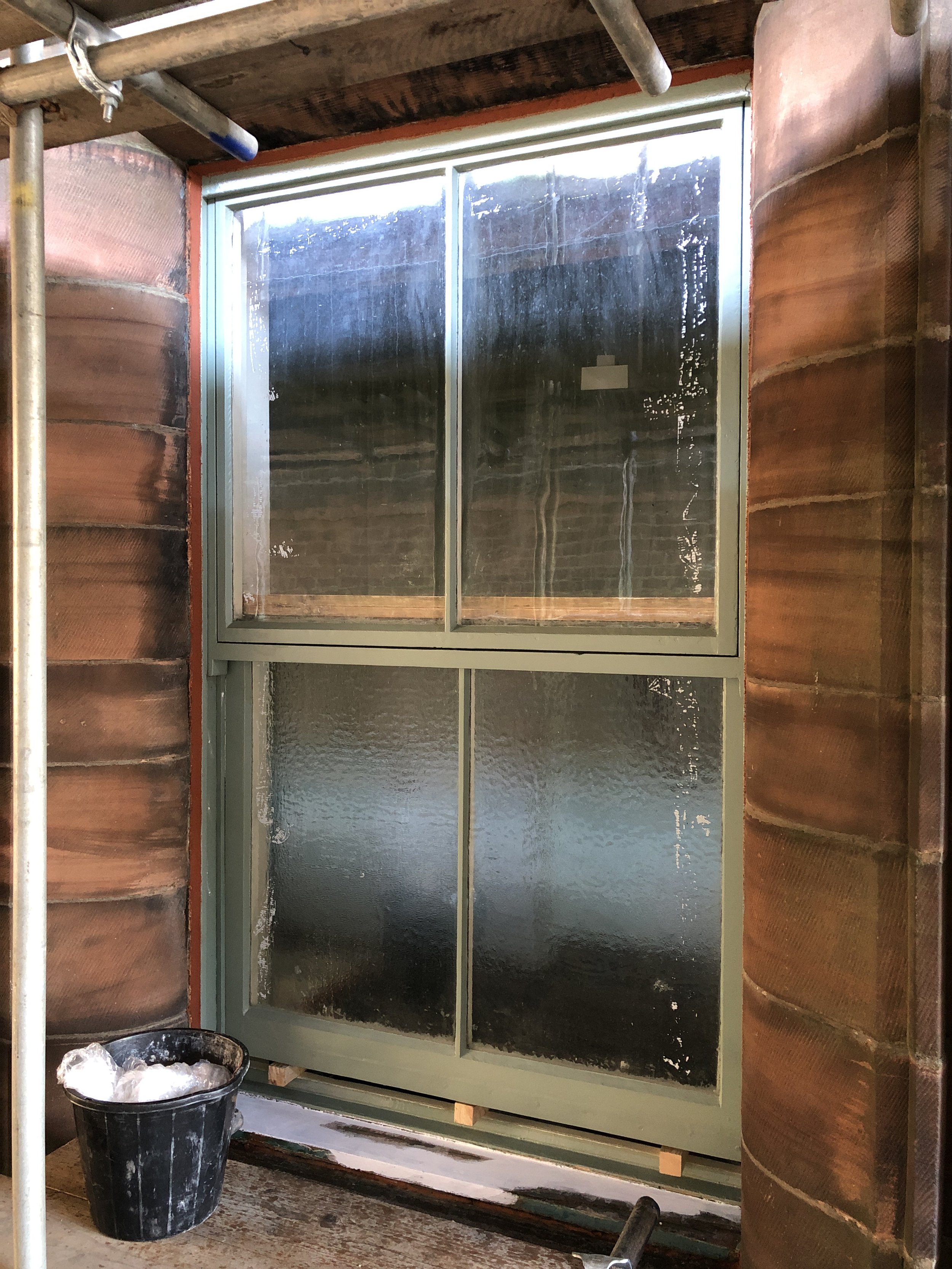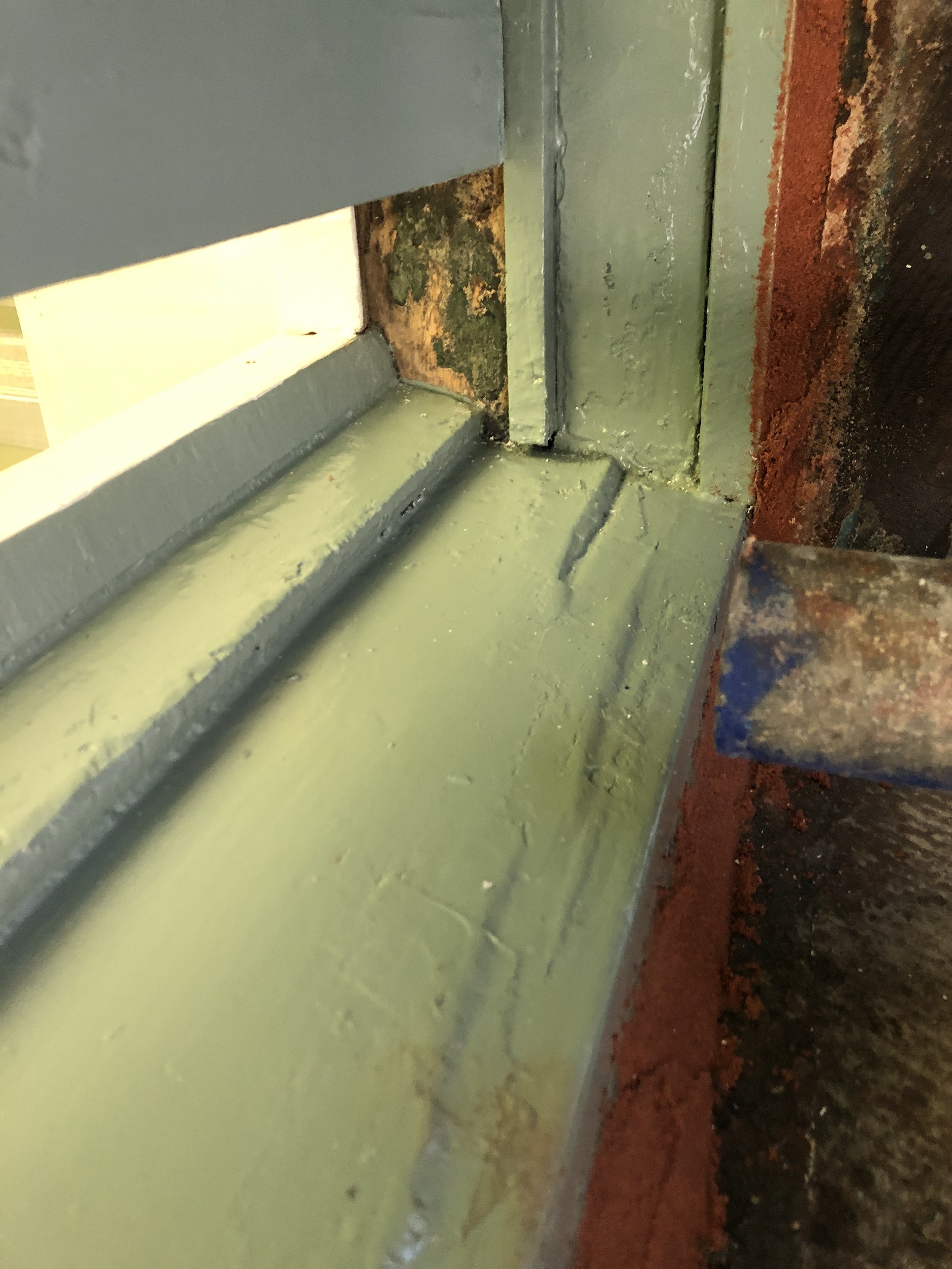Scotland Street School.
Scotland Street School Museum was a functioning school up to 1979, designed by renowned Scottish architect Charles Rennie Mackintosh in the 20th century. Glasgow City Council’s plans for the building are to take on a new, wider purpose, including the creation of an early years nursery and a digital learning hub, in addition to the museum service, and therefore require a large refurbishment of the building.
As part of that refurbishment they wanted to determine how the original windows were designed and how they operated. The original sash and case windows, appeared to have another sash within the top sash, but were all sealed shut at some point, presumably to prevent drafts and to assist in energy efficiency of heating the building. They still slid open vertically, but no-one had any recollection or recorded information on how the top sashes operated.
Working with Darren McLean I was hired to inspect, dismantle and restore the window, while Darren provided a full report for GCC including conclusions on the design, species of timber and original paint colours.
Involvement
I undertook a repair and restored one of the smaller windows on the east side of the building, to help understand how the top sash operated. The findings were extremely exciting.
The top sash actually rotates on a central pivot, which has not been seen in any other samples of Mackintosh’s work.
We concluded that these were the original windows, and took timber samples to verify the timber they were made from. The paint layers were also sampled, and tested to determine the original paint colour.
After taking the window out and understanding how it originally operated, I then restored it to original condition and operation, painting it the original colours.
Gallery
The Process
Upon initial inspection the upper and lower sashes were both ‘sealed’ closed and would need to be eased. The window had been ‘over painted’ in the past, seemingly on multiple occasions. This is evidenced by the hard, stalactite, type dips of paint. The configuration of the astragals had been changed. The paint was badly deteriorated to the timber of the window and to the mastic surrounding the window and the sand Mastic was failing. The sash cords would need to be replaced. The pocket covers were removed from the window frame and the pocket recesses were vacuumed clean to remove detritus that can harbour damp and encourage decay problems. All timber window components were inspected for fungi (rot) and insect damage. Some small areas where the timber had remained damp for some time were at risk of becoming friable or other deterioration. These areas were allowed to dry. The sand mastic was removed and underlying Portland cement filler was removed. Sash cords were replaced. The sash dowels had become loose and were proud of the sash surface. The dowels were put back in place prior to painting. New Simplex System hinges were installed. Paraloid B72 was used in some areas where the timber was deemed satisfactory and had dried after being damp for some time. The Paranoid B72 is able to consolidate wood that is friable, or likely to become friable. As a conservation resin that is readily dissolved in acetone, it is reversible. During this process, all loose paint was removed, scraped back to original timber in areas where the paint was badly deteriorated and replacement of failed glazing putty. Finally new sand mastic was applied to bridge between the sash frame and masonry. When space permitted, traditional Oakum was used. The sand mastic adheres well to oakum.
Original Window pivoting on central pin.
restored window working as originally designed
These videos are copyright and exclusive use for this website alone. Please get in touch directly if you wish to download, showcase or circulate the footage.






